The best noise cancelling headphones 2025, tested by our audio experts for all budgets
Tune in (and tune out) with the best noise cancelling headphones
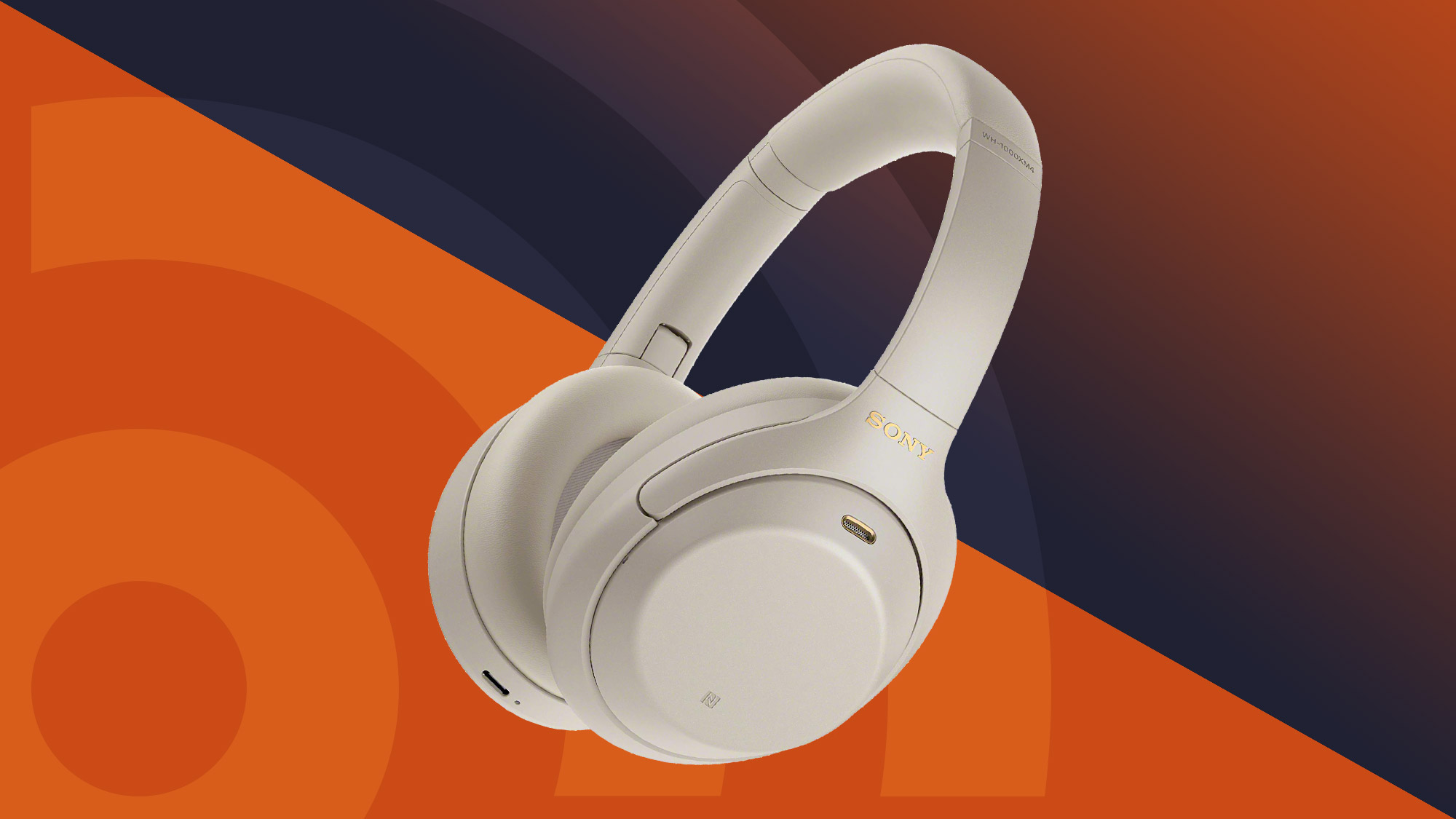
- Quick list
- Best overall
- Best budget
- Best premium
- Best mid-range
- Best for battery life
- Best for Sony fans
- Best for Apple fans
- Best for sound
- Best for design
- Best for smaller heads
- Best for movies
- Best for EQ tweaks with ANC
- Also consider
- Coming soon
- Meet the team
- How to choose
- How we test
- Latest updates
If you're planning a vacation or a business trip and you've heard people talk about how the best noise-cancelling headphones can make travel infinitely more enjoyable, you're in the right place. The best ANC headphones can transform flights and plane journeys by silencing conversations, drowning out the sounds of carriages and take-offs and creating a bubble of tranquility. They're not just for travel either, they can make noisy offices, crowded gyms and anywhere you need peace much more bearable.
Our expert team has rigorously tested hundreds of active noise-cancelling headphones over the years. We make sure to evaluate each and every pair for their battery life performance, all-day comfort levels, design choices, added features, audio quality, and, most importantly, real-world noise isolation. We have years of expertise to draw them, as well as a dedicated testing setup, which is why our independent recommendations can be trusted. We're reviewed every ANC headset in this list to ensure excellent performance and outstanding value. All of our picks below left a strong impression on our experts, it's why they're here in this guide.
If you’d like a more compact option, or don't like the feel of headphones, then do read our best noise cancelling earbuds guide instead. Otherwise, stick around to explore our top picks for every budget, from affordable options to premium luxury models.
The quick list
Want to cut to the chase and find out which noise cancelling headphones are the best? Below, you’ll find a roundup of our choices. You can also jump to a more detailed review of every pick, along with our price comparison tool to help you find the best deals.
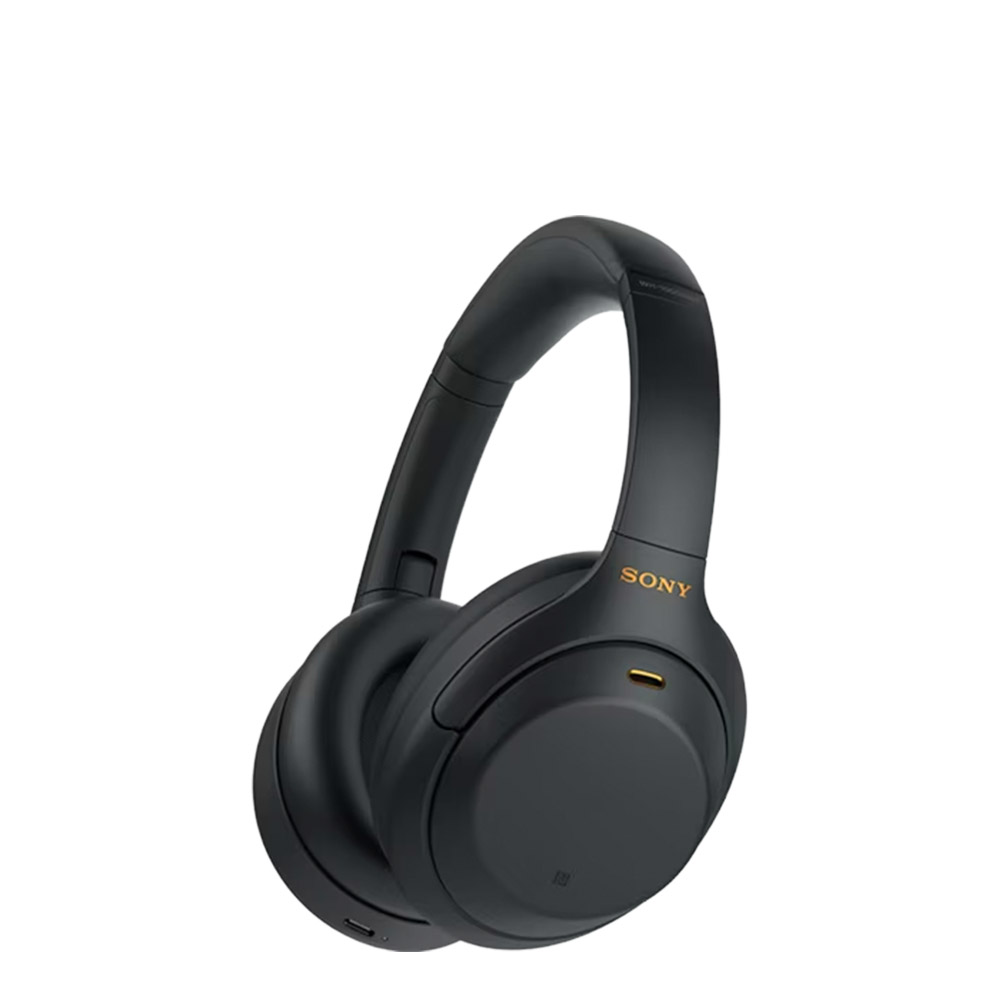
The best noise cancelling headphones for most people
Unbeatable on sound quality, design and value, the WH-1000XM4s are the perfect all-rounder and have seamless ANC that keeps you locked in a sonic world.
Read more below
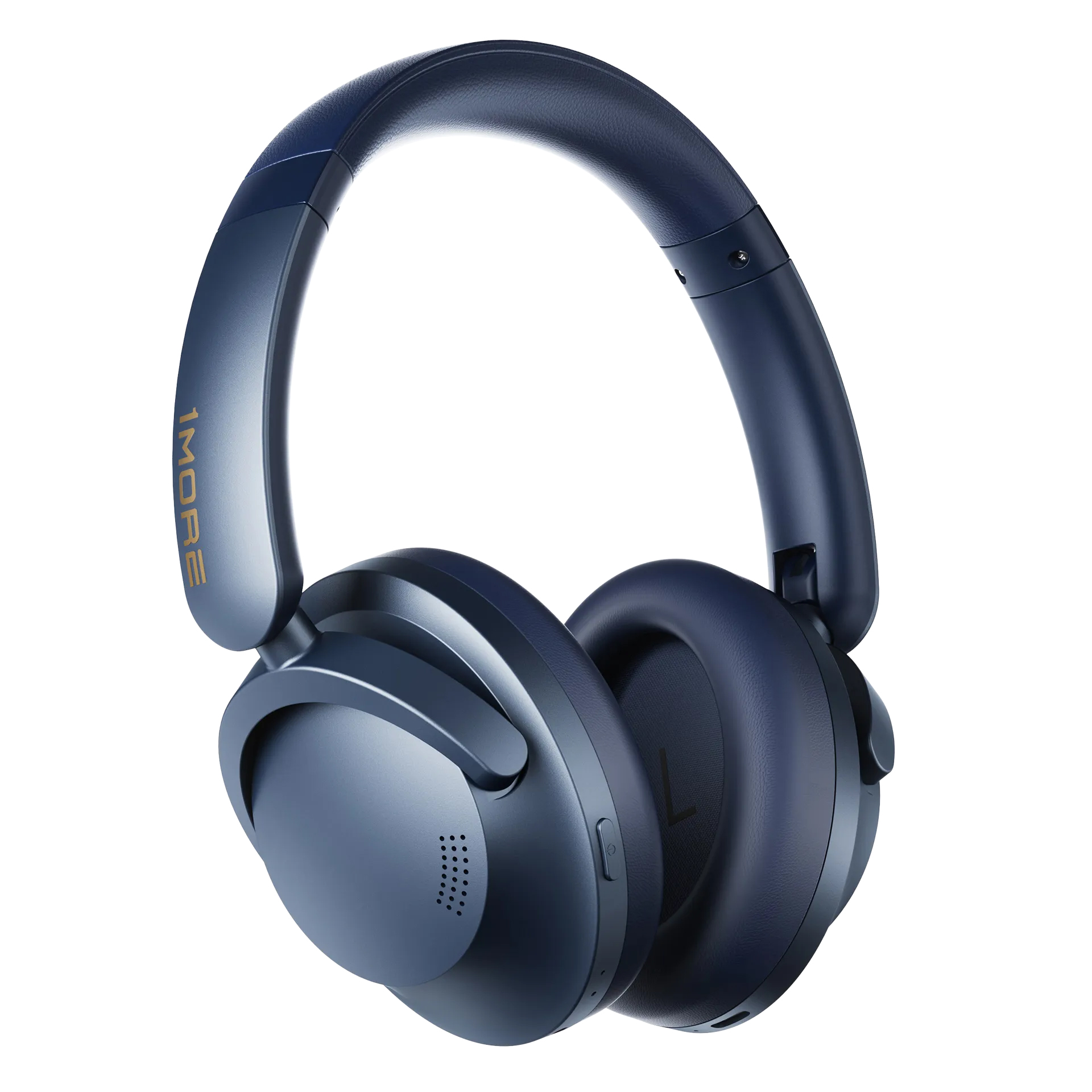
The best cheap noise cancelling headphones
At this price point, it's hard to believe that 1More's Sonoflow Pro HQ51 over-ears deliver such effective ANC alongside enjoyable sound and an impressive battery life. Excellent sound-per-pound value here.
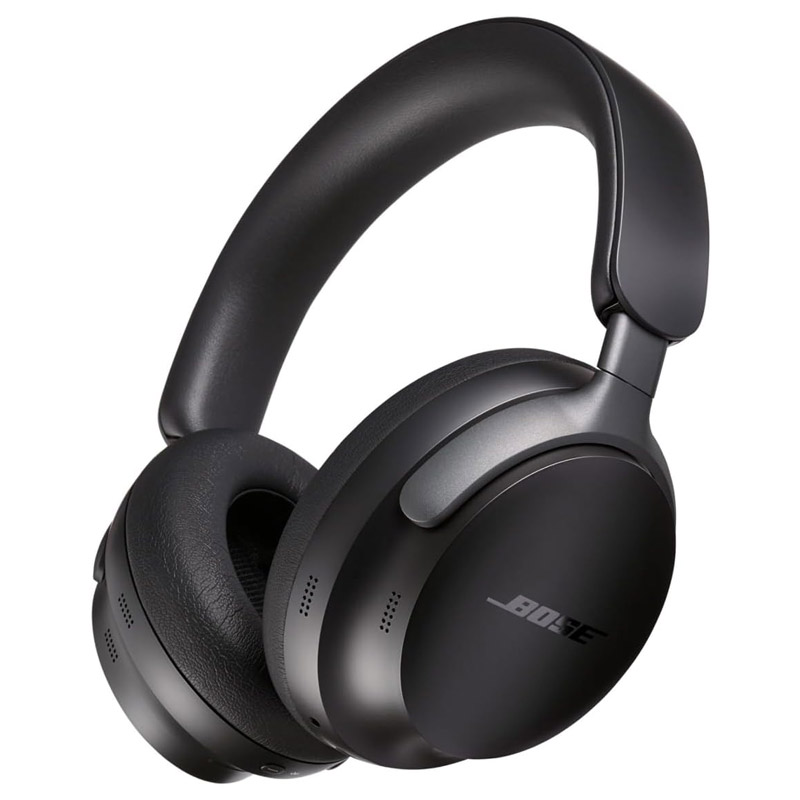
The best premium noise cancelling headphones
Don't mind spending a bit extra to get the best? These offer the best noise-stopping power we've ever heard, with phenomenal sound quality and a high-quality build as a bonus.
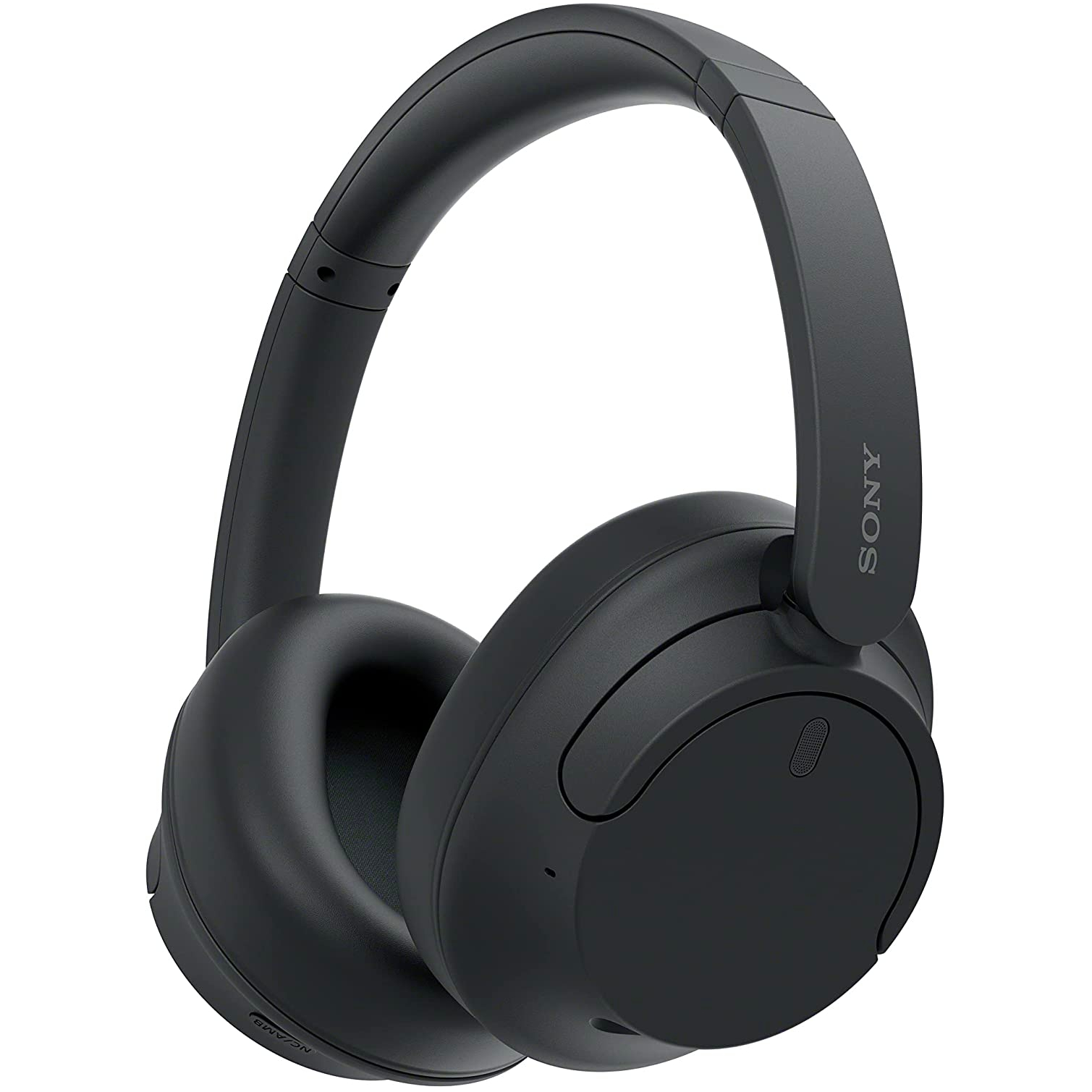
The best mid-range noise cancelling headphones
These are satisfying, high-quality headphones for the price. The sound balance is excellent, they've got good smart features, and solid noise cancellation.
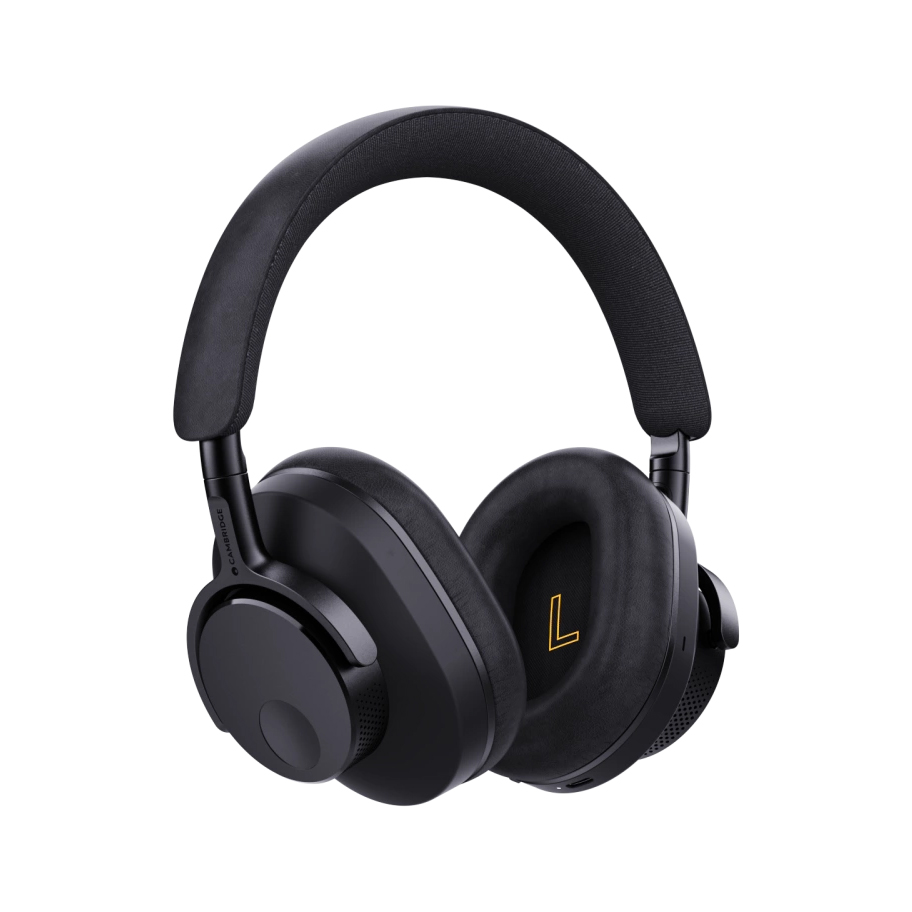
The best noise cancelling headphones for battery
Battery life without ANC is 100 hours (yep, you read that right) and even with ANC you'll still get a fantastic 60 hours. If long listening sessions are important to you, these can't be beaten.
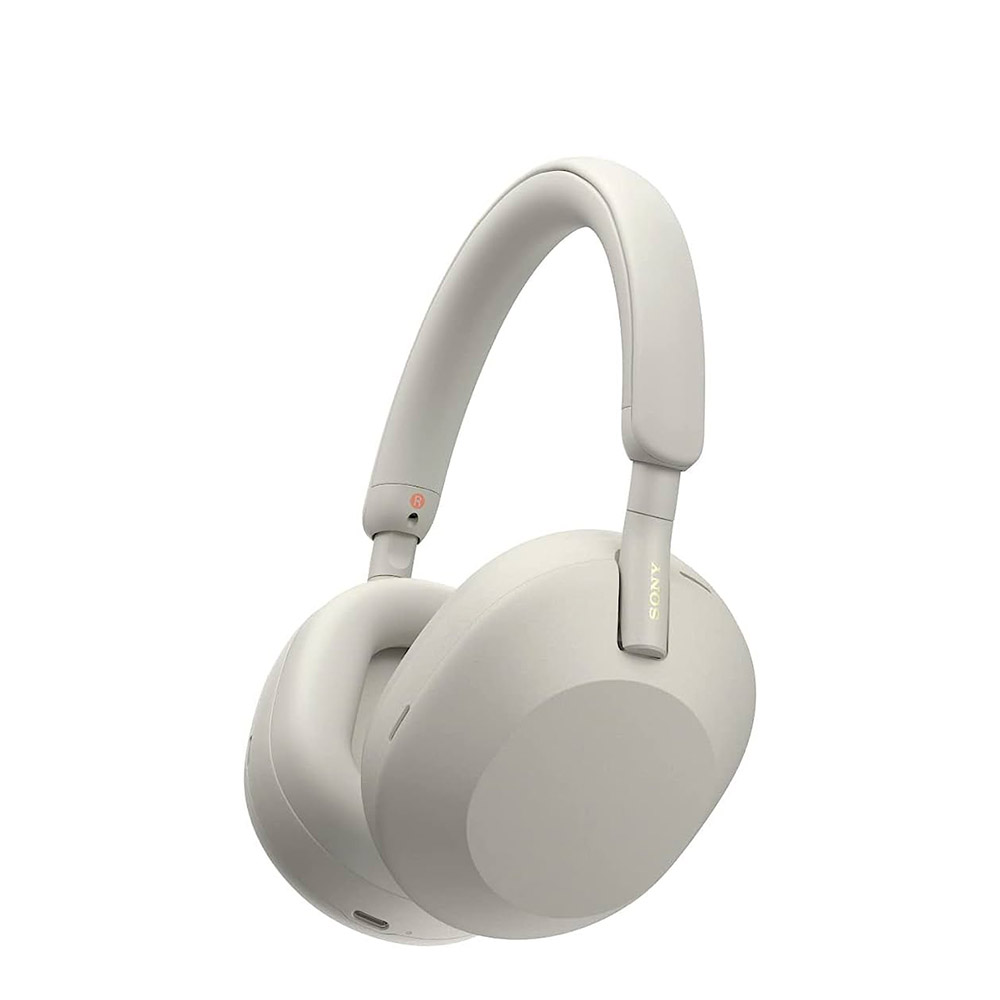
The best noise cancelling headphones for Sony fans
The WH-1000XM5 are Sony's flagship cans, and offer the company's best ANC and sound. They're great, but beaten by rivals in some key areas.
Load the next 4 products...
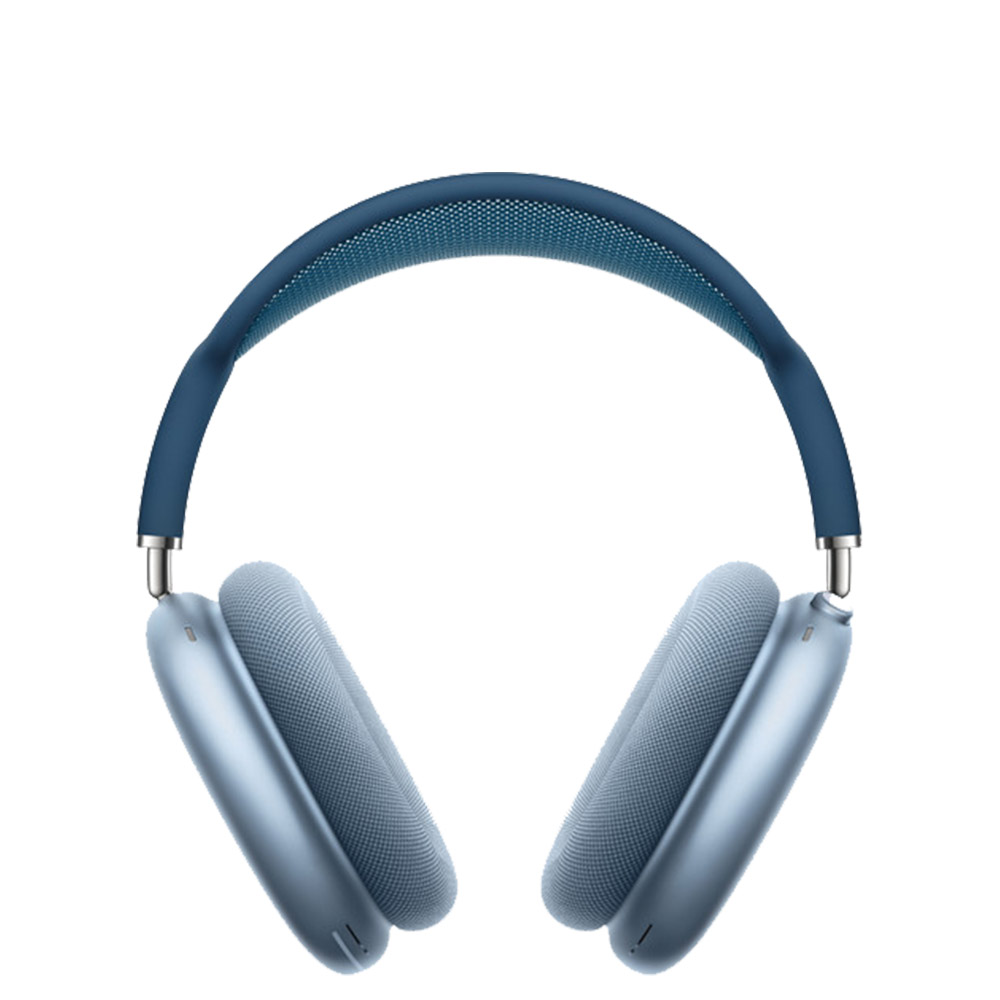
The best Apple noise cancelling headphones
These offer extremely strong active noise cancellation, along with elite connectivity and features for iPhone owners, as well as wonderful spatial audio. Just at a high price.
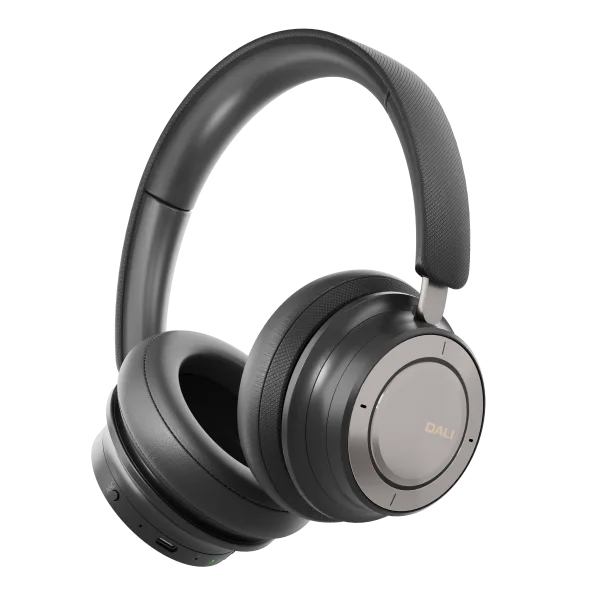
The best noise cancelling headphones for sound
Everything about these headphones screams high-end, the look, feel, build and, of course, the sound. It's detailed, expansive and makes for one incredibly enjoyable listen, no matter which genre you prefer.
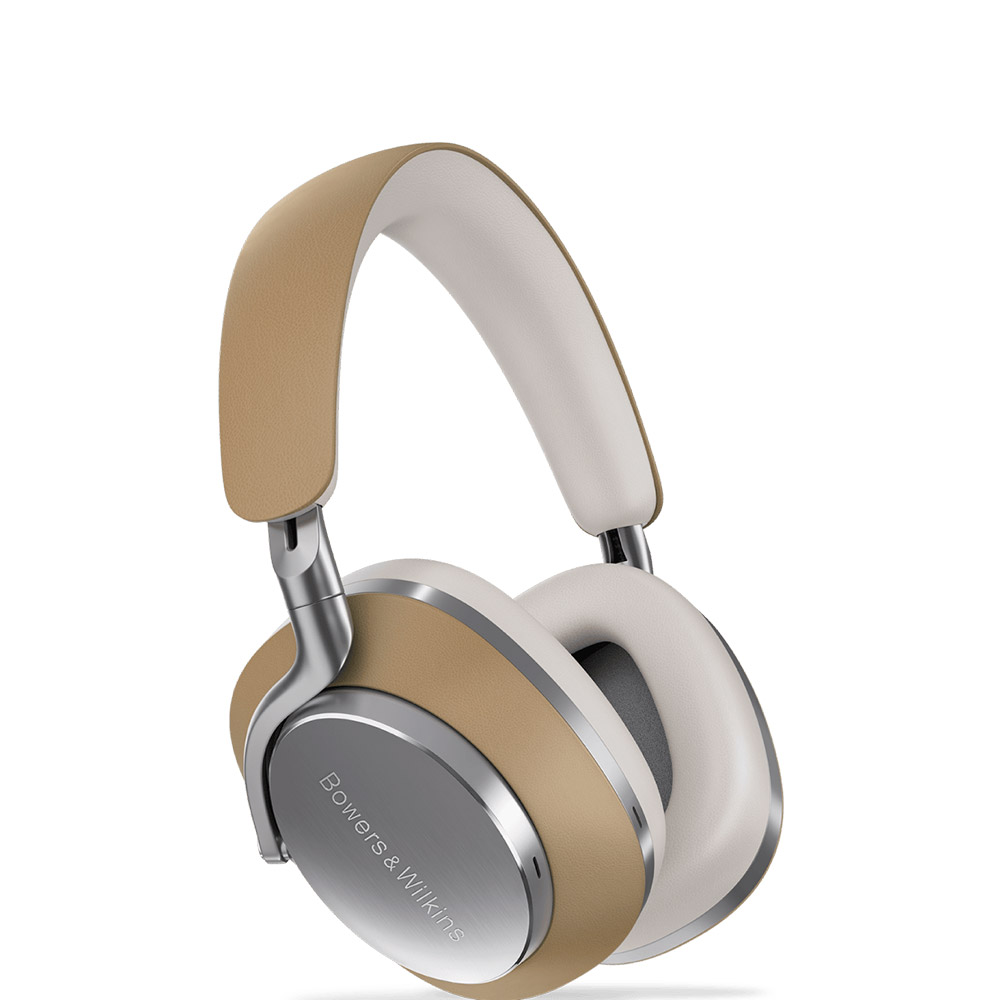
The best-looking noise cancelling headphones
Every single part of these headphones has been designed and made with precision and care. They not only look great with aluminum detailing and Nappa leather, but sound incredible.
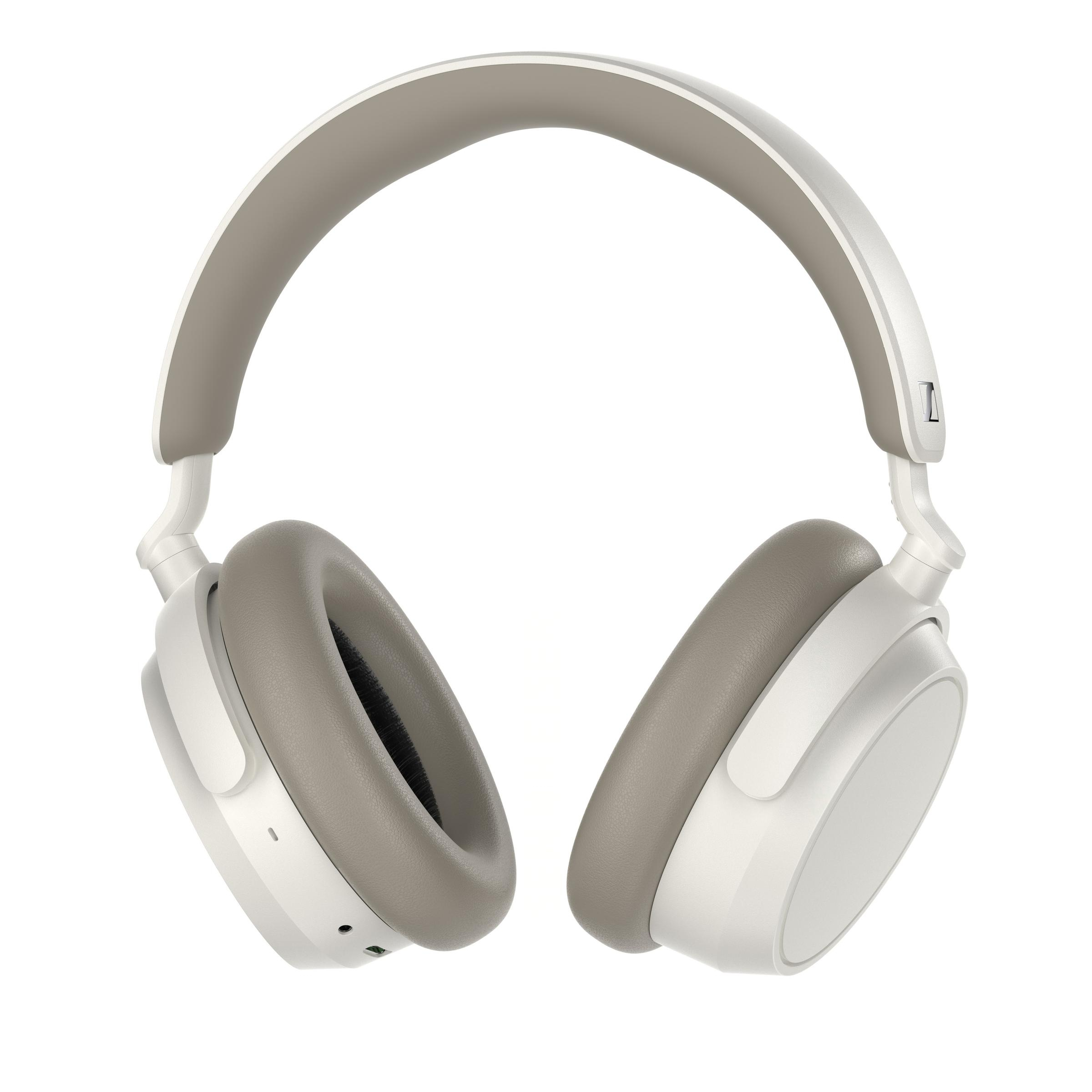
The best pick for a tighter fit
Sennheiser's 2024-issue affordable headphones boast some flagship features and excellent noise cancellation for the money – especially if your head's on the small side.
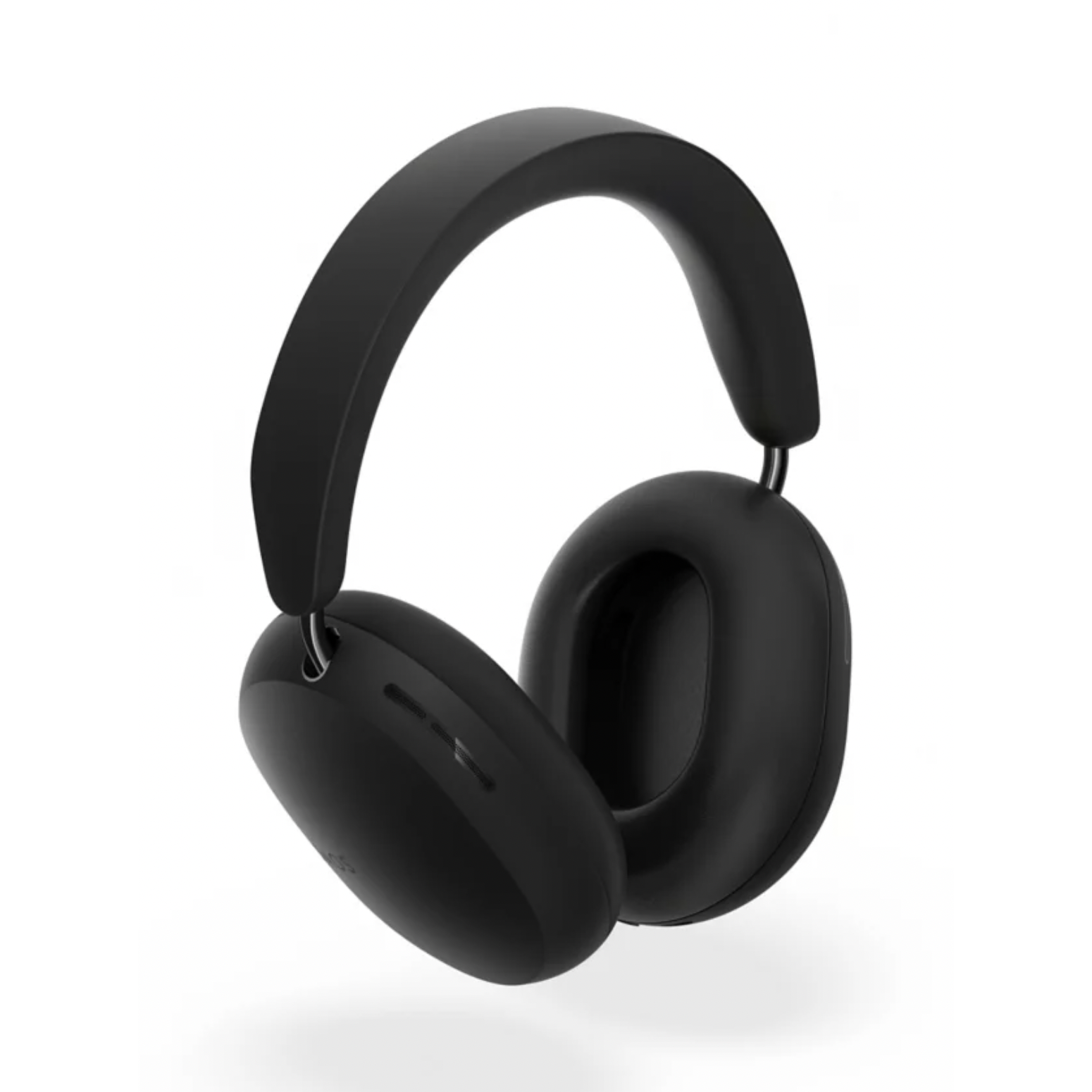
The best noise-cancelling headphones for Dolby Atmos
The Sonos Ace offer the best Dolby Atmos spatial audio and movie-balanced sound we've heard, via Sonos soundbars or over Bluetooth. The ANC is great too, but music quality is a weaker point.
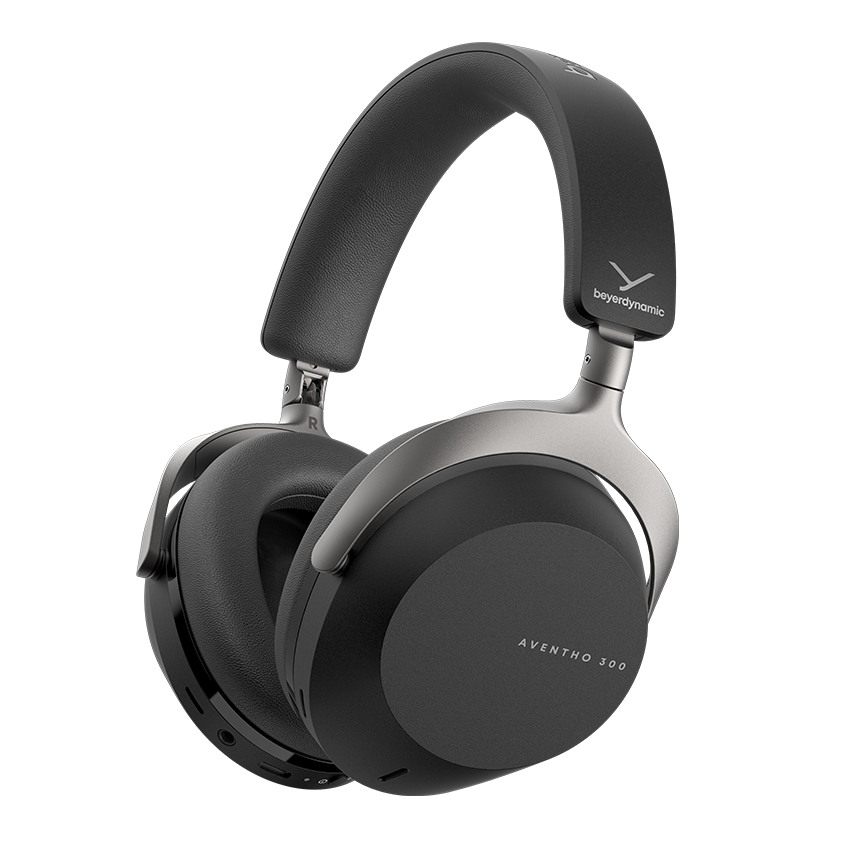
The best noise-cancelling headphones for EQ tweaks
Excellent all-rounders and great for customization. Our reviewer noted the efficacy of tweaking the five-band EQ tab by up to 6dB either way, for whichever frequencies you fancy.

I've reviewed over 150 audio products since becoming a tech journalist, ranging from super-budget earbuds to high-end Hi-Res Audio music players. Before joining TechRadar, I spent three years at What Hi-Fi? testing everything the world of audio had to offer; before that, I was a professional dancer. I've test noise cancelling headphones of all stripes in all kinds of conditions, from trains to offices to planes.
Recent updates
March 28, 2025
Refreshed the introduction. Switched the 1More Sonoflow for the recently-reviewed 1More Sonoflow Pro HQ51 as our 'best budget' pick. Added a brand new section called 'coming soon' to showcase all of the best ANC headphones landing imminently. Added a bunch of new products here, including the upcoming Sony WH-1000XM6s.
The best noise-cancelling headphones 2025
Why you can trust TechRadar
Below you'll find full write-ups for each of the best noise cancelling headphones in our list. We've tested each one extensively, so you can be sure that our recommendations can be trusted.
The best noise cancelling headphones overall

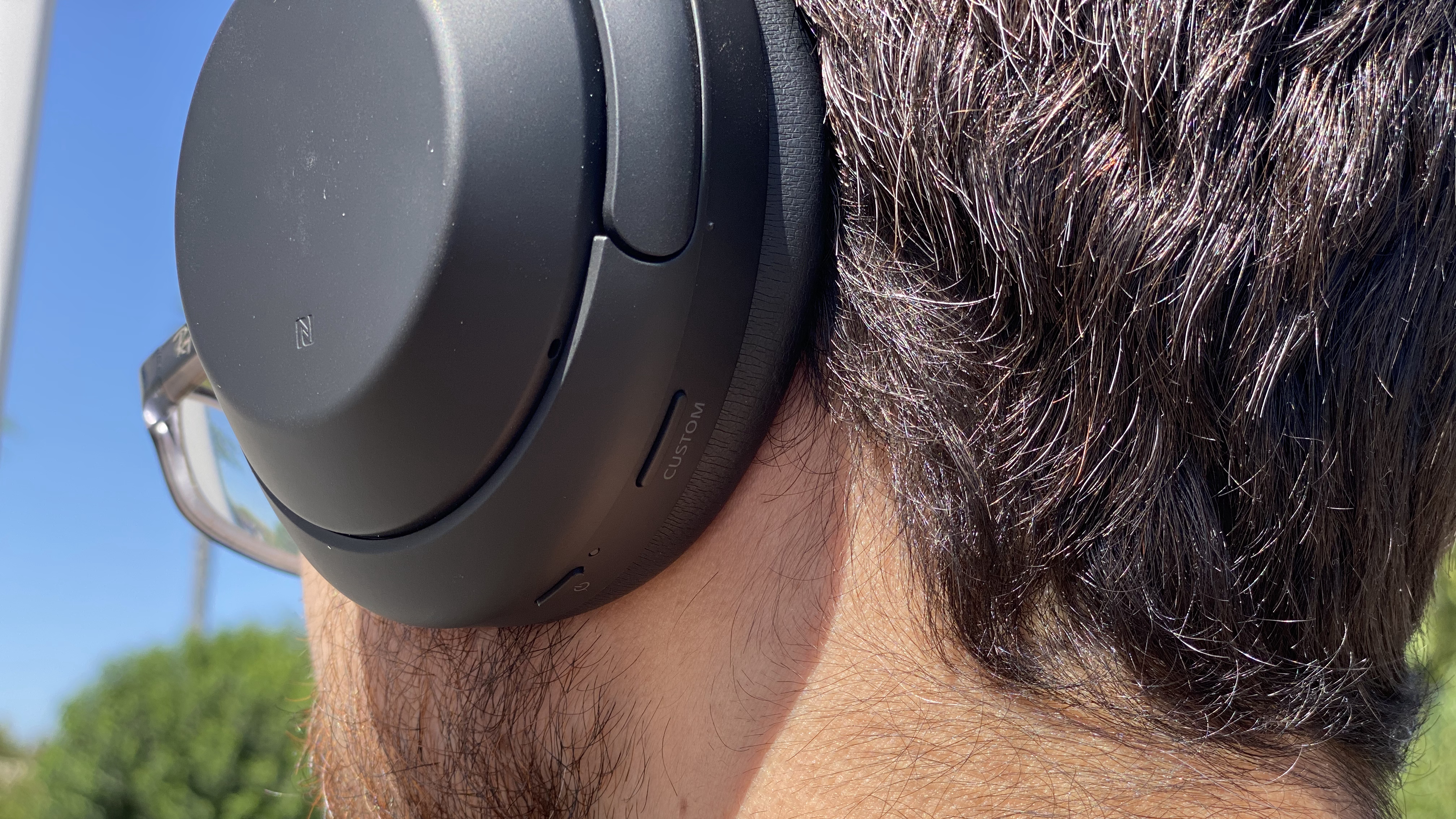
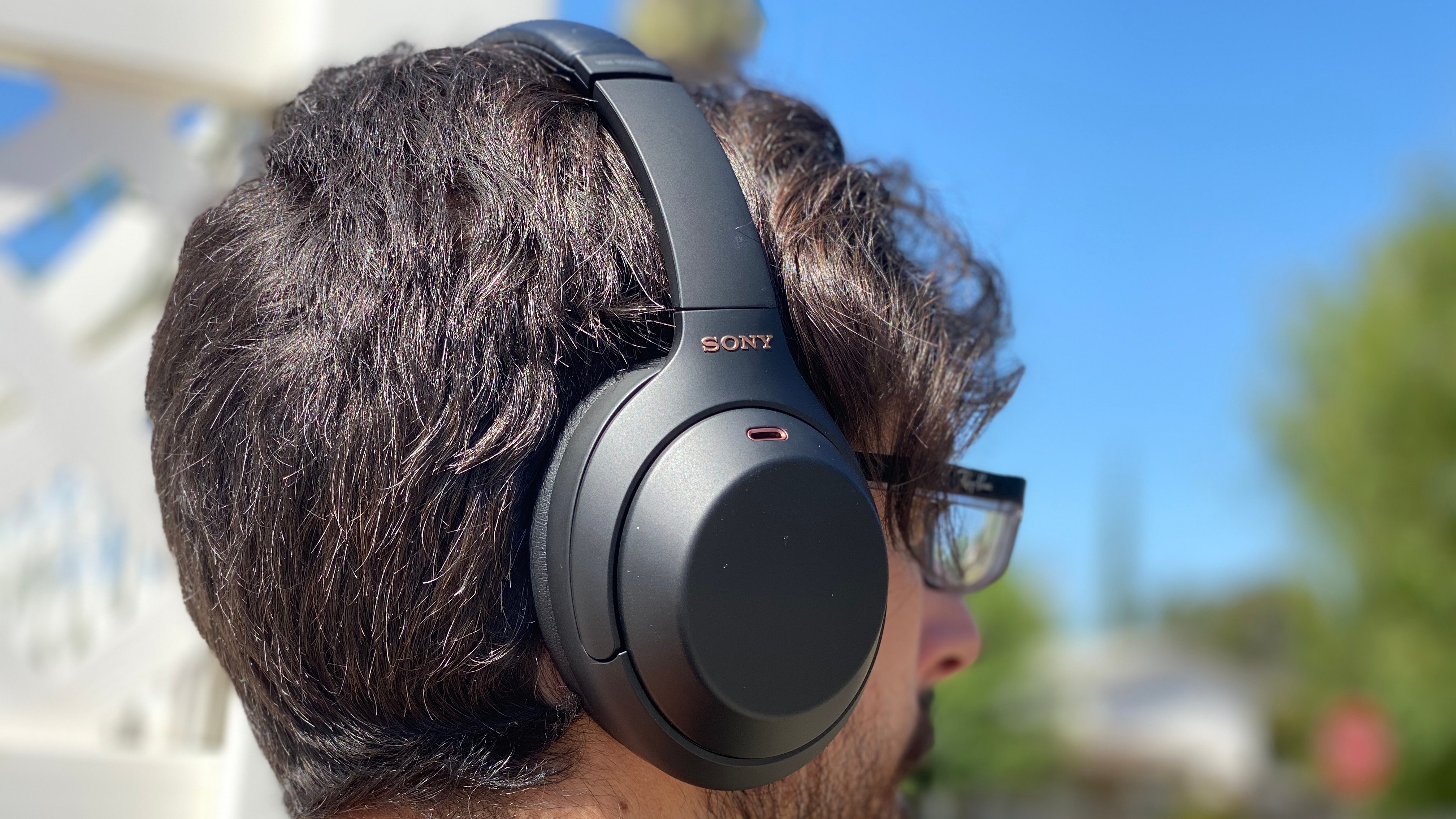
Specifications
Reasons to buy
Reasons to avoid
The Sony WH-1000XM4 headphones deliver strong noise cancellation and rich sound quality in a lightweight, comfortable design. Although these are an older model – now superseded by the Sony WH-1000XM5 – a price cut means that they're still our top pick because they're regularly available for such a good price. They're still packed with great features including multipoint pairing, DSEE Extreme upscaling, conversational awareness ,and auto-play/pause – they're all the noise-cancelling headphone we think most people will need.
In every department, the Sony WH-1000XM4 are a superb pair of wireless noise cancelling headphones. They can be beaten in any particular category, but not in every category at the same price. They deliver all-round satisfaction, and most importantly they offer there are no complaints about the sound. In our tests we listened to Janelle Monae’s absolute banger Make Me Feel. It sounded supremely powerful on the WH-1000XM4 headphones, from the bop of the percussion to the wall of sound that accompanies the pre-chorus.
On top of all this, the Sony WH-1000XM4 support Sony’s 360 Reality Audio format that enables spatial audio, plus the LDAC codec that can support CD-quality audio from compatible phones. It's a shame there's no aptX support, and you'll get far better audio quality and battery life from the Cambridge Audio Melomania P100 at #5 in this list – while the Sony WH-1000XM5 and newer Bose headphones (see #3 on this list) beat it for sound quality. But those are generally all notably more expensive than this model, especially during sales events, where these are always available for bargain prices.
Read our full Sony WH-1000XM4 review
Attributes | Notes | Rating |
|---|---|---|
Design/comfort | Refined and subtle design. Mostly durable and comfortable to wear for long listening sessions. | 4/5 |
Active noise cancellation | Still excellent ANC several years after launch. Not best-in-class but a fantastic almost-silence for most people. | 4/5 |
Sound quality | Warm and balanced, clear and powerful bass. Support for 360 Reality Audio for spatial audio. | 5/5 |
Battery life | No improvement on previous version in terms of battery life, but still solid at 30 hours. | 4/5 |
The best budget noise cancelling headphones
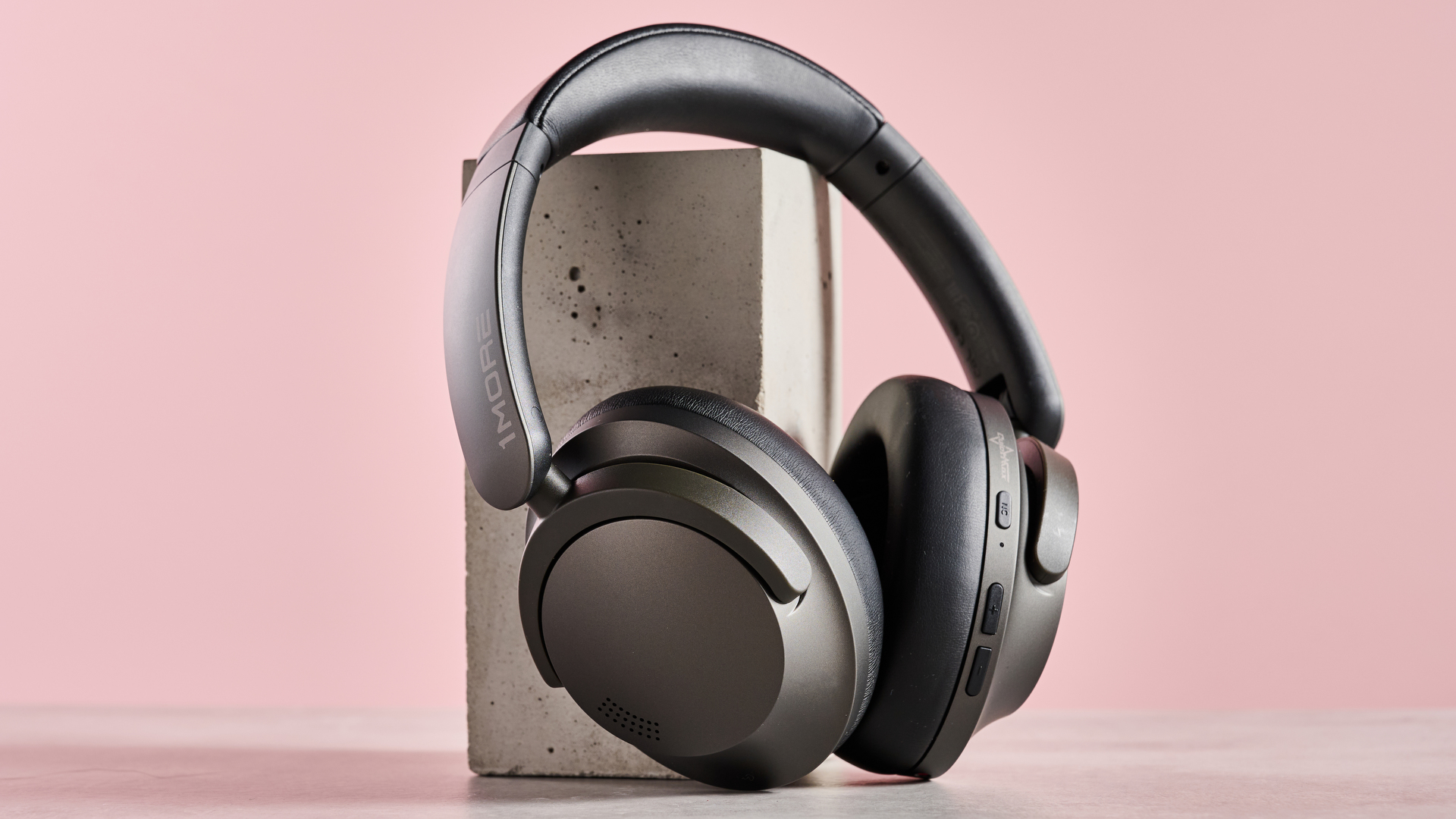

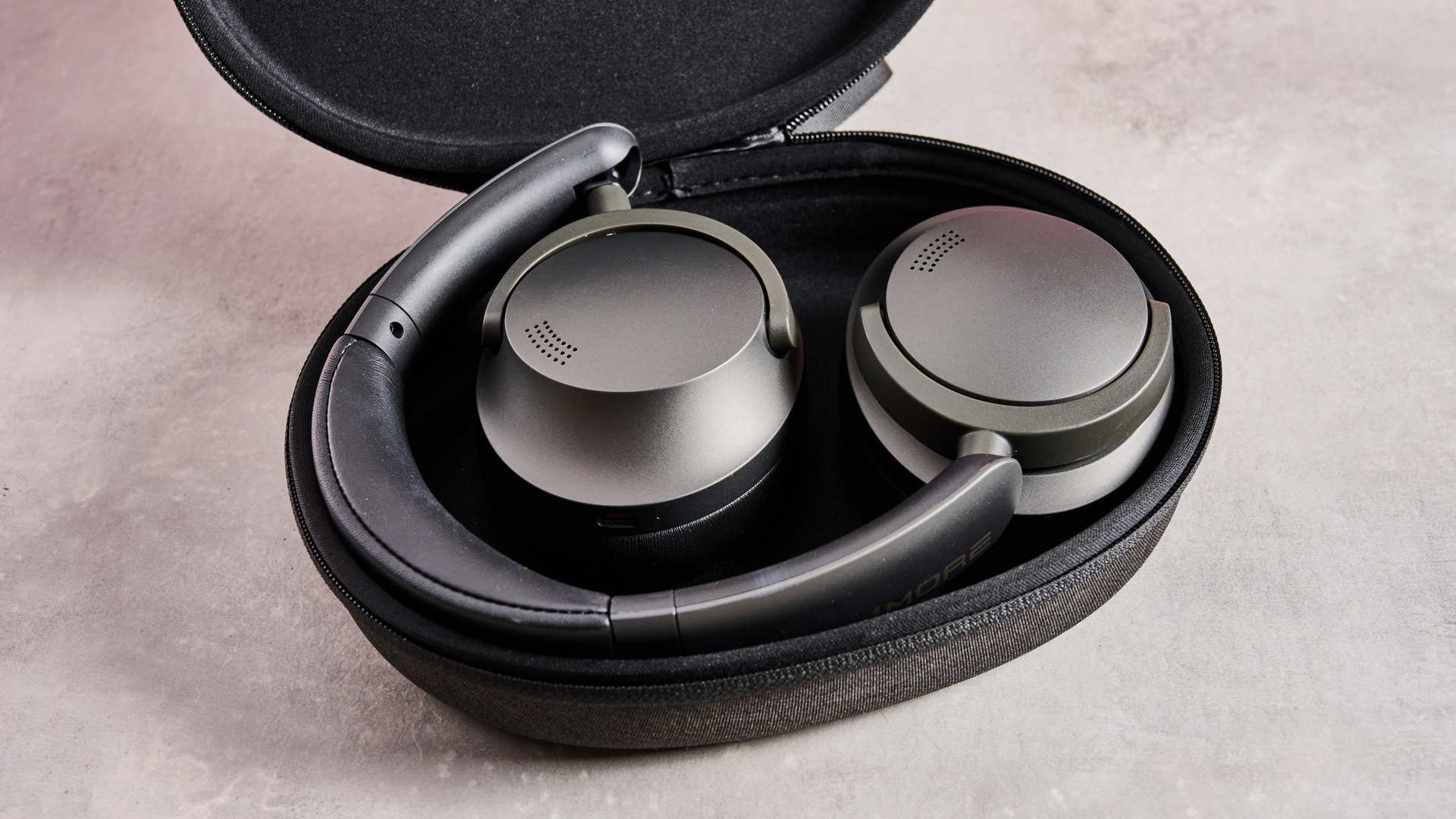
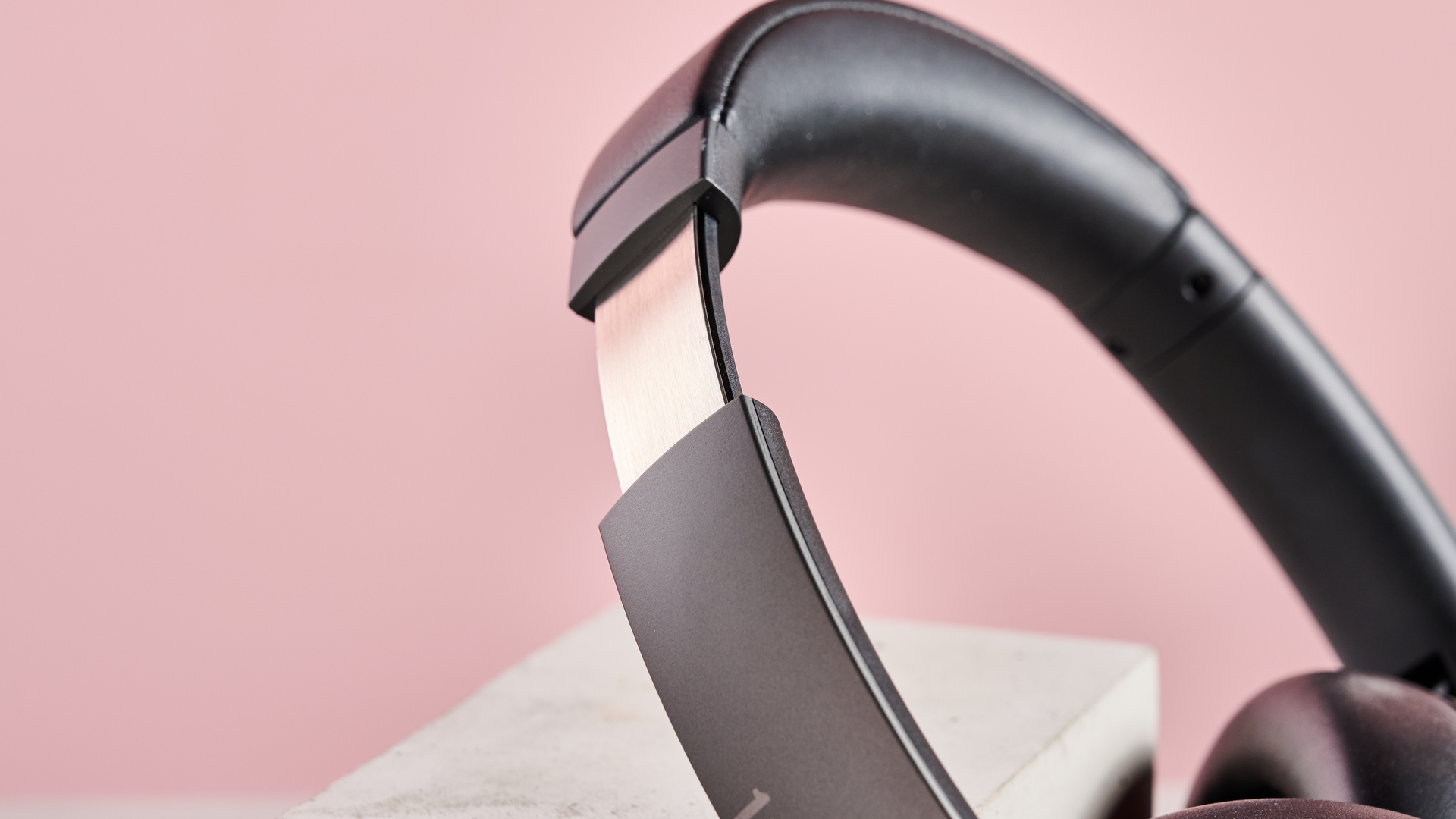
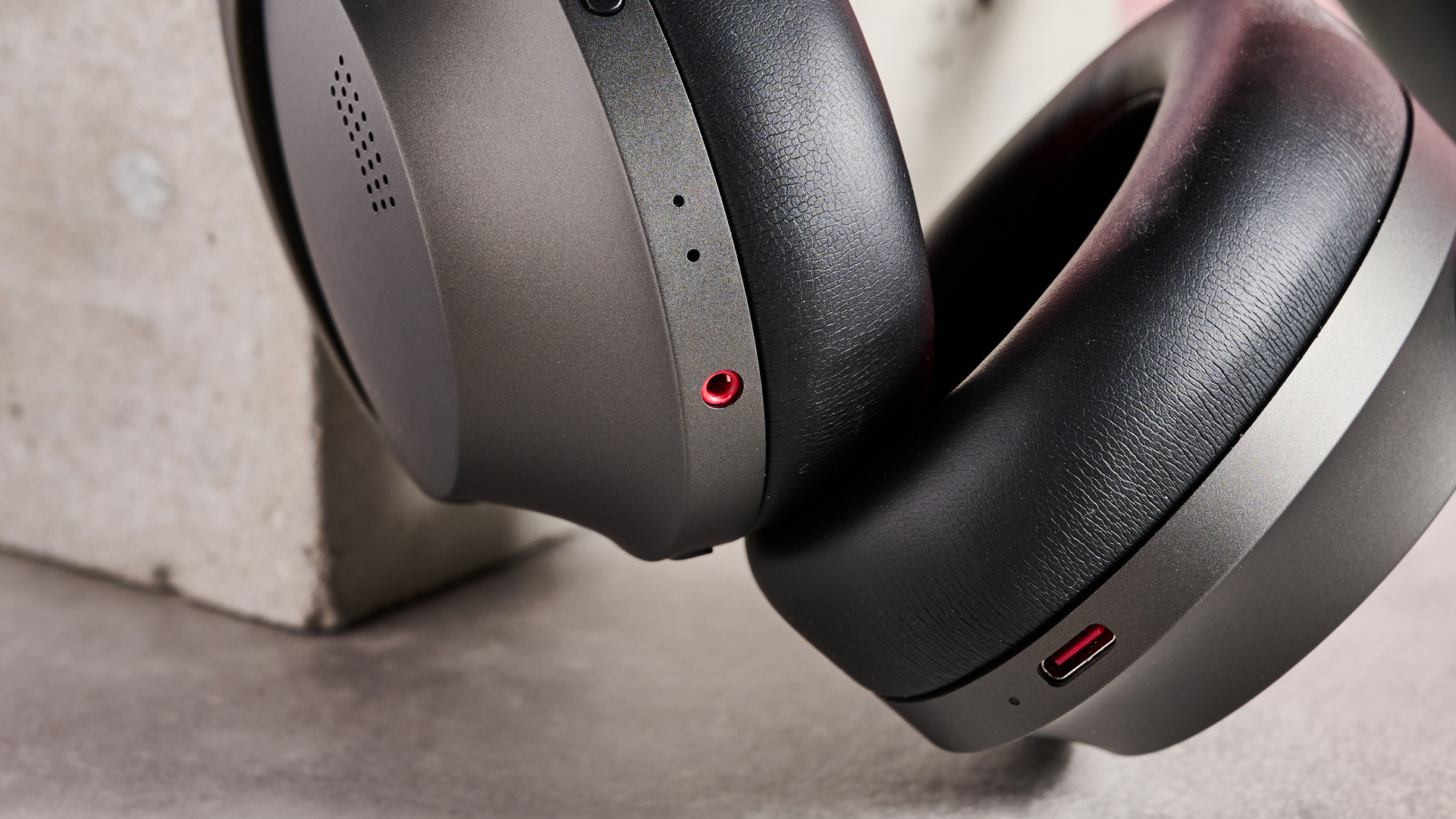
Specifications
Reasons to buy
Reasons to avoid
The 1More Sonoflow Pro HQ51 over-ear headphones prove you can get great ANC for under $100/£100. That’s why they’re our top pick if you're on a budget but still want immersive sound – and a way to drown out the world while you're at it.
As you'd expect at this price point, the ANC isn’t best-in-class, but it’s solid and a noticeable upgrade from previous 1More models. There are three noise-cancelling modes, which you can toggle in the 1More app – where you’ll also find EQ presets and an option to activate hi-res streaming. With ANC switched off, you’ll get an impressive 100 hours of battery life. But let’s be real, if you’re here for the ANC, expect around 65 hours, which is still good for the category.
These aren’t the best noise-cancelling headphones money can buy, but at this price, they deliver a surprisingly strong experience. The sound isn’t high-end audiophile territory, but in our tests, we were impressed by the clarity across tracks and the rich, punchy bass – courtesy of the Sonoflow’s dual 40mm drivers. There’s support for Sony’s LDAC hi-res audio format too, though you’ll need a compatible device and hi-res audio content to make the most of it.
Design-wise, they’re simple but sleek, with a matte-like finish to the plastic casing. The ear cups are soft and adjustable, making them comfy to wear, and they’re lightweight at just 246g. Physical buttons on the earcups handle controls, but they do feel a little plasticky, and the build overall lacks durability – there's no water or dustproofing here. That said, the included hard carry case is a nice touch, and the sturdy folding hinges make them ideal for travel.
In short, the 1More Sonoflow Pro HQ51 headphones are great value for money. We rated the battery life and comfort highly, especially given the price. They feel more premium than they should, thanks to the sleek finish, decent ANC, and that solid carry case. Sure, there are better headphones out there, but not at this price.
Read our full 1More Sonoflow Pro HQ51 review
Attributes | Notes | Rating |
|---|---|---|
Design/comfort | A simple design that looks more premium than it should. Very comfortable to wear, but feels a little flimsy. | 3.5/5 |
Active noise cancellation | The ANC isn't best-in-class but it is very impressive considering how cheap these over-ears are. | 4/5 |
Sound quality | Not high-end sound, but great considering they're affordable with some fun EQ presets and both wired and LDAC listening. | 4/5 |
Battery life | Excellent battery life of up to 100 hours, you'll still hit 65 hours with ANC on. | 4.5/5 |
The best premium noise cancelling headphones
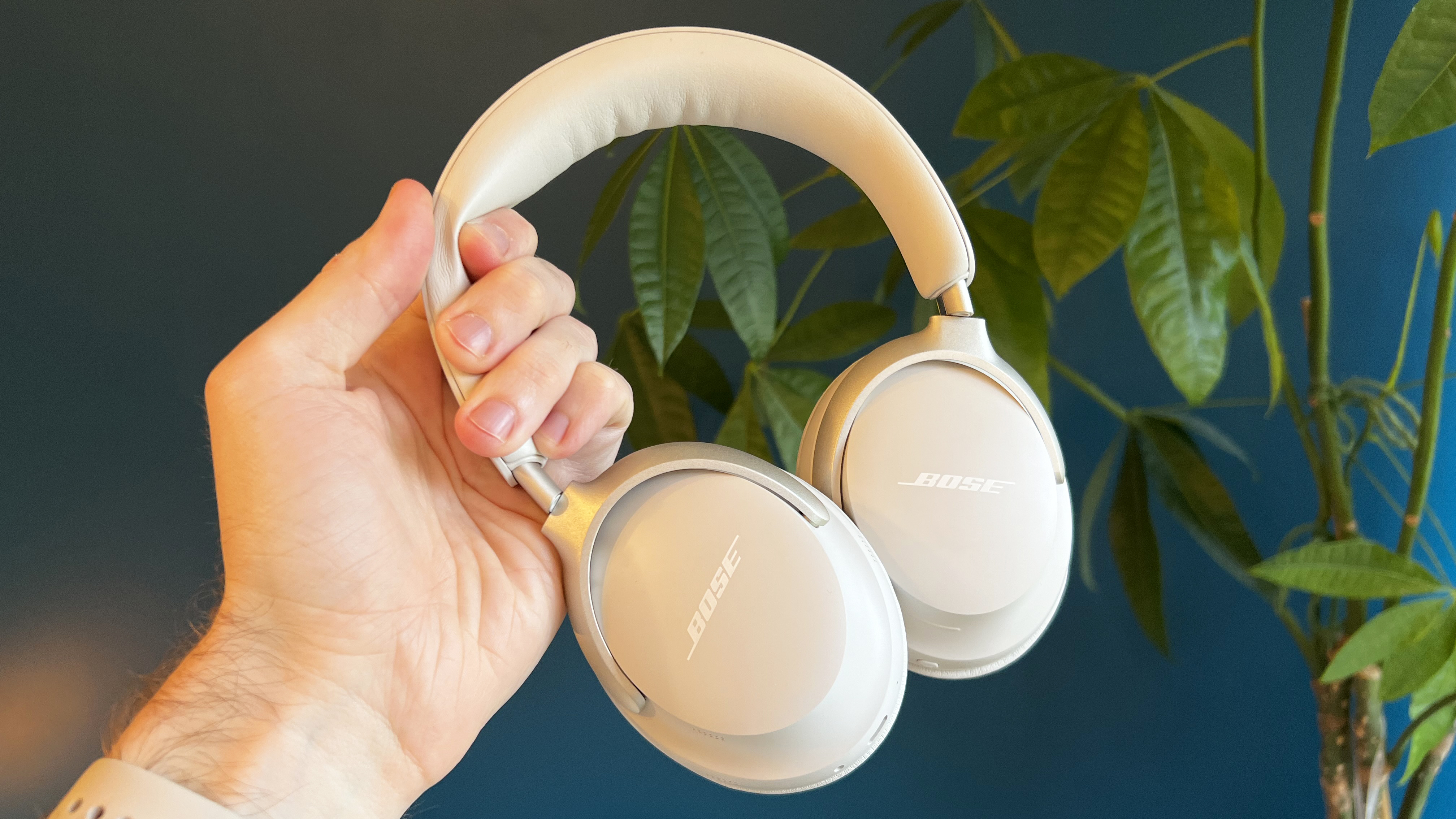
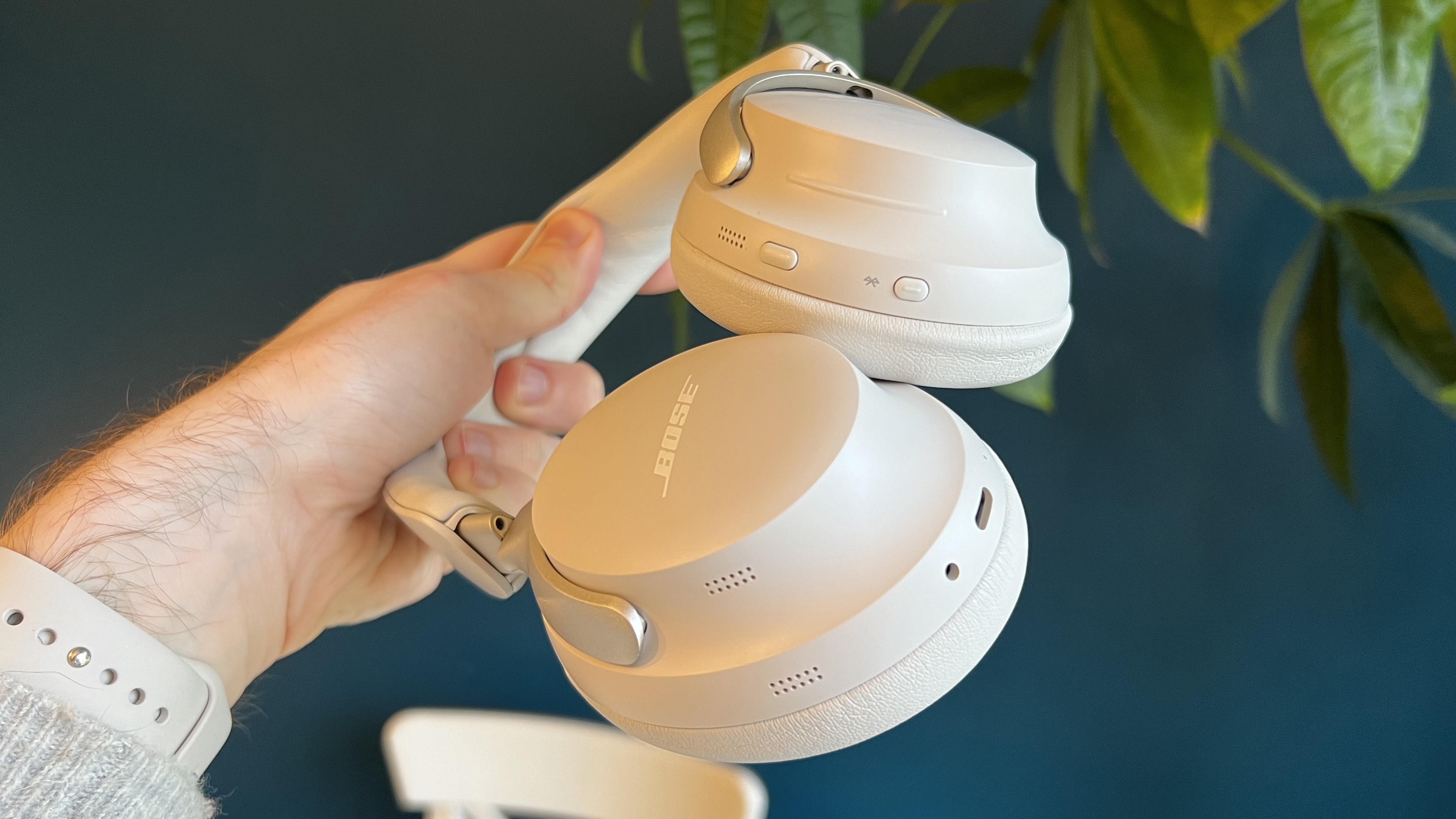
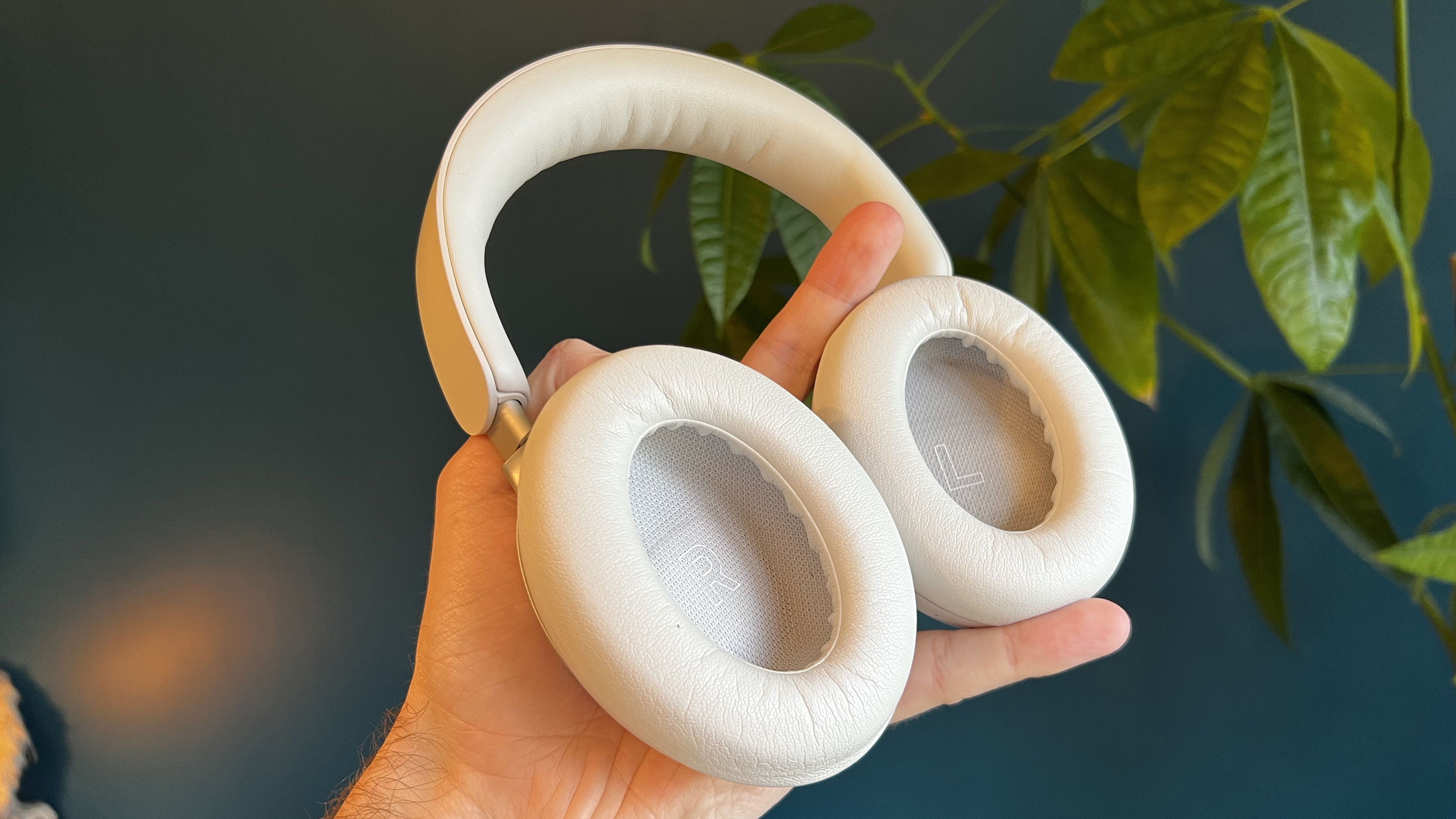
Specifications
Reasons to buy
Reasons to avoid
If you're looking for simply the best active noise cancellation you can get, the Bose QuietComfort Ultra Headphones offer it. And not only that, it's combined with easily Bose's best sound quality to date, which we called "electrifying" in our full review. These are not cheap headphones (though they're less expensive than the Bowers & Wilkins and Dali options in this list), but as our review also says "from the moment you start using them, they feel worth every penny." If you're looking to save some money, however, be sure to check out our Bose discount codes.
We tested them in as many different noisy environments as we could manage, ranging from international flights, to local buses, to walking around a busy city, to in the TechRadar office and at home. In all cases, they stamp down on sound more effectively than anything else we've used to date – if what you want is silence and focus, we cannot recommend these strongly enough. One thing we will say, though, is that the cheaper Bose QuietComfort Headphones are basically as good for this element.
However, as we've already said, the music quality is just fantastic in these headphones, even with noise cancellation turned on – a clear cut above the sound from Bose's other headphones, or Sony's offerings. Our review said that they "deliver some of the most alive, exciting, textured, finely resolved, deeply engaging music I've ever heard from a pair of wireless headphones."
There are two somewhat disappointing aspects to them, though: the 24-hour battery life is below average (you get 30 hours pretty typically, including from Sony's headphones, while you get 100 hours from the Cambridge Melomania P100 at #5 on this list); and they only support Snapdragon Sound for higher-quality audio. There's no regular aptX or LDAC support, and there's no USB-C audio input for fully Hi-Res Audio, which you get from the Sennheisers and Sonos options in this list.
If these don't sound like dealbreakers, then know that the Bose Ultra really live up to their name. We should mention, however, that if you like the sound of Bose over-ears but can't quite justify the price, it might be worth reading our Bose QuietComfort Headphones review, the noise cancelling headphones that came before the Ultras. They're not as refined as the Ultras, which are in upgrade in almost every way, but they still deliver Bose's great sound and impeccable ANC in a comfortable package.
Read our full Bose QuietComfort Ultra Headphones review
Attributes | Notes | Rating |
|---|---|---|
Design/comfort | Incredibly comfortable with a premium build and a handy folding design. | 5/5 |
Active noise cancellation | Best-in-class noise silencing power – no one does it better than Bose. | 5/5 |
Sound quality | Rich sound with detailed bass. The dynamism here is also astounding. Expect a fantastic, energetic listen. | 5/5 |
Battery life | Only a 24 hour battery life, which isn't necessarily bad but is weak compared to rivals. | 3.5/5 |
The best mid range noise cancelling headphones
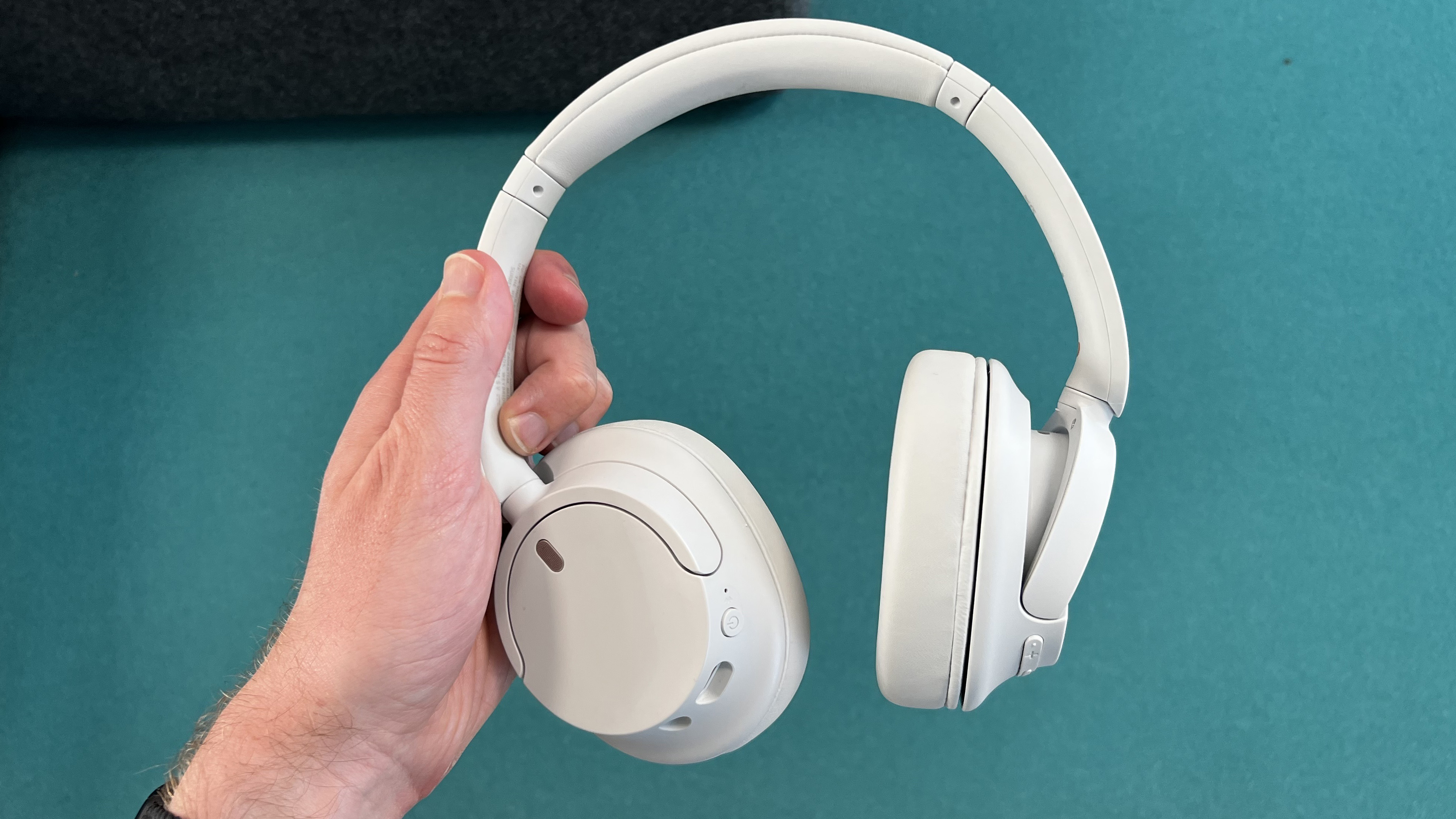
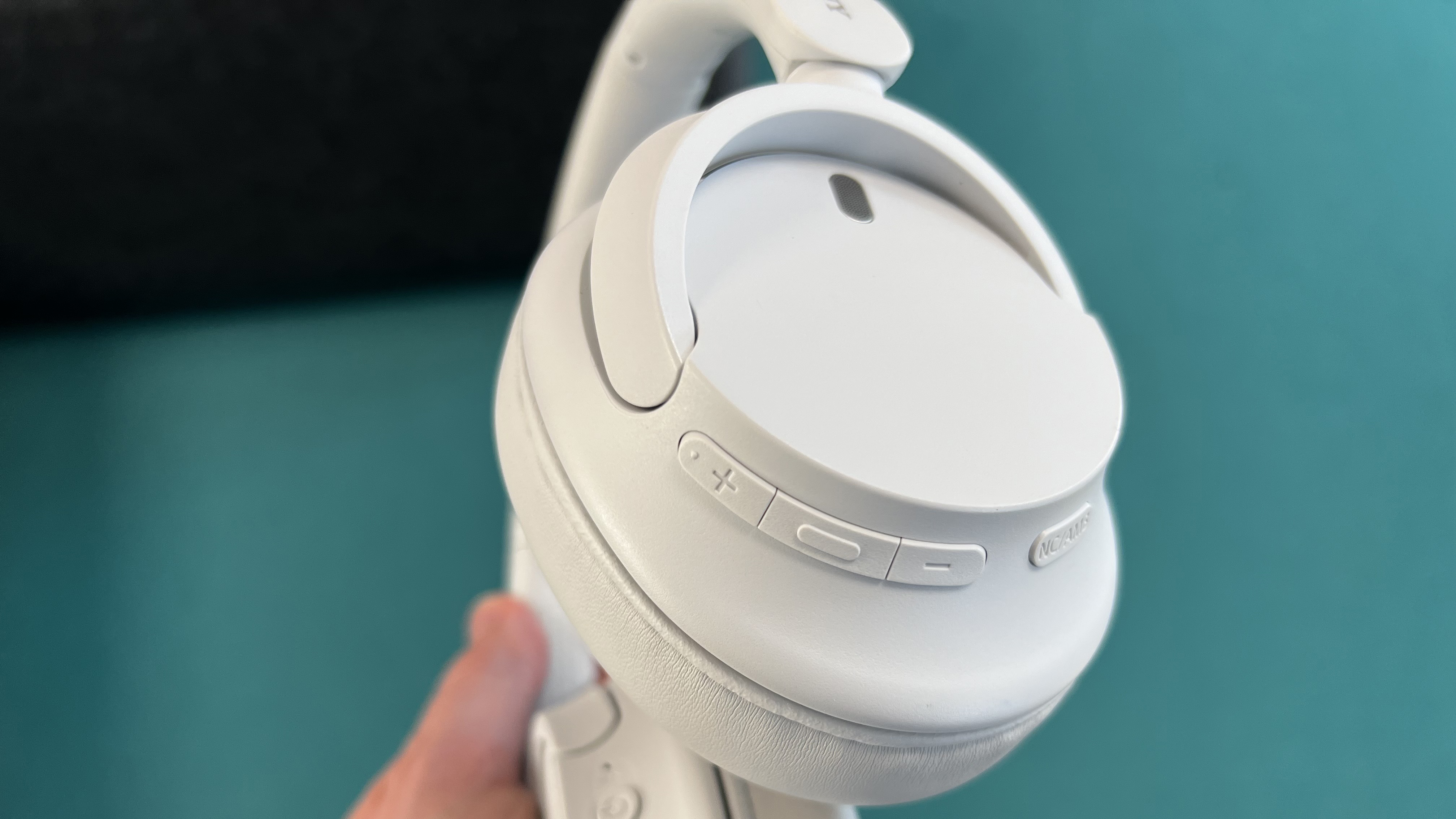
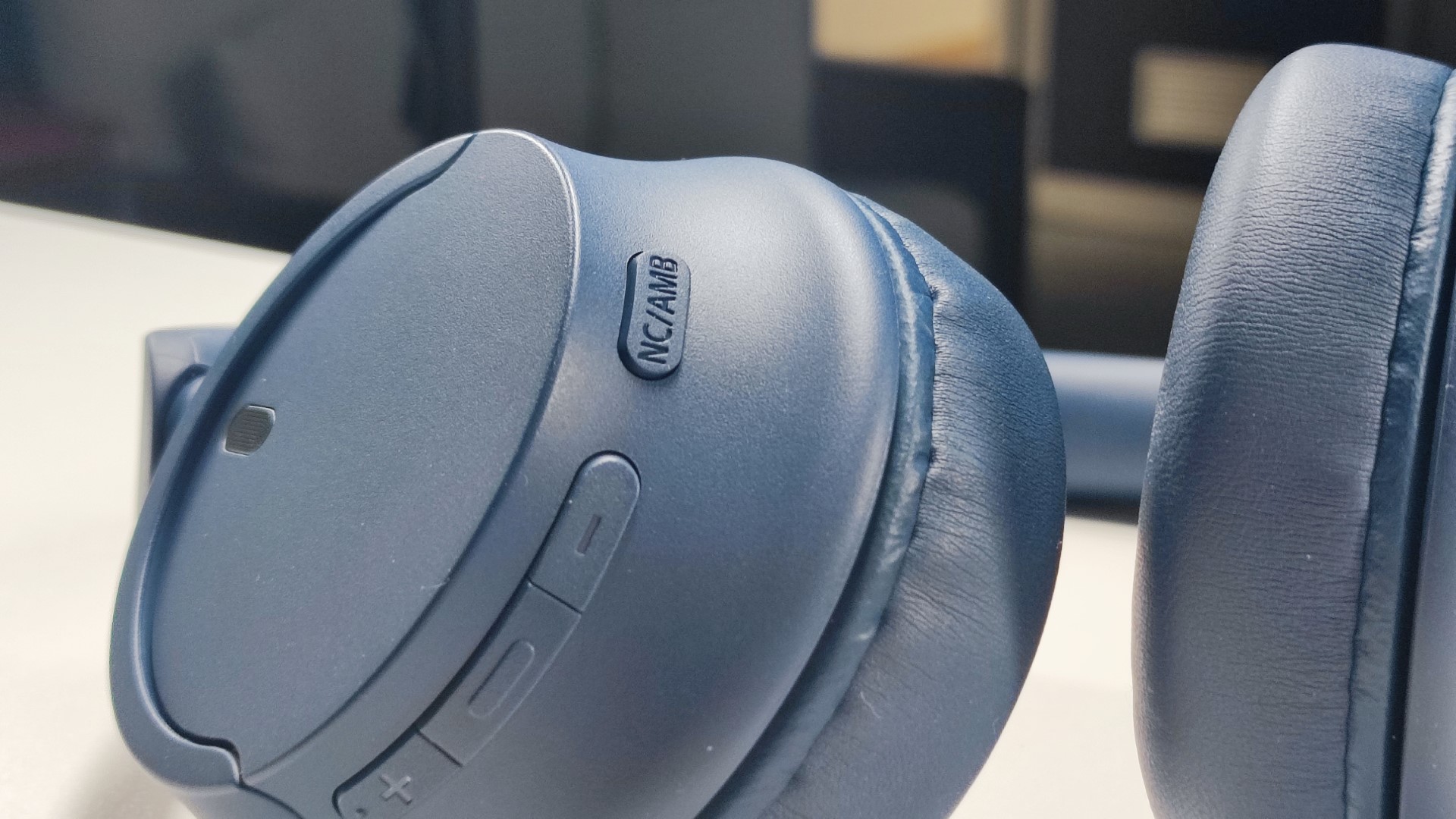
Specifications
Reasons to buy
Reasons to avoid
The Sony WH-CH720N strike a great balance between price and performance, bringing active noise cancellation that absolutely reduces outside noise significantly so you can hear your music (or podcast, or whatever) more distinctly, while also giving you Sony's usual excellently balanced sound.
Okay, for around half the price of the Sony WH-1000XM4 at #1 in our list, you're obviously losing some quality – they're not miracle workers. The active noise cancellation leaks in notably more sound in the low end (which is generally where it's most effective) as well as higher-end noises, so it's more that it reduces the volume of outside sounds than really creates that bubble of silence. On a plane, we found that we had to turn the volume up to 60% to hear soft conversation in a movie – but at least we could hear it at all. And in a less harsh circumstance than trying to watch a movie on a plane, we found that it definitely means you don't have to turn the volume up as loud when walking in the traffic of a city, for example.
Similarly, the sound quality has less rich bass and layered mids and treble than the WH-1000XM4, but as mentioned before, it's extremely well tuned for the dynamic range it has, so your music really sounds as it should. It has absolutely no problems with detail, serving up plenty of sharpness and clarity when needed. It just feels a little boxed in compared to the broader soundstage of more expensive headphones.
There's no support for LDAC here, which some mid-range competitors do have (or they offer aptX instead), but there's multipoint Bluetooth for easy switching between two devices, and a 3.5mm jack for wired audio when needed. These are also very light, and so are generally very comfortable to wear for long periods.
Read our full Sony WH-CH720N review
Attributes | Notes | Rating |
|---|---|---|
Design/comfort | The design is light and comfortable for long listening sessions, with easy to use buttons. Don't expect a premium feel, however. | 4/5 |
Active noise cancellation | Not the best ANC in the list, but great value – you won't be disappointed at this price. | 3.5/5 |
Sound quality | Great balance to the audio here and it's packed with detail – expect a very enjoyable. But it can feel a little compressed. | 4/5 |
Battery life | Expect an impressive 35 hours here, not the best but better than more expensive rivals in this list. | 4/5 |
The best noise cancelling headphones for battery life
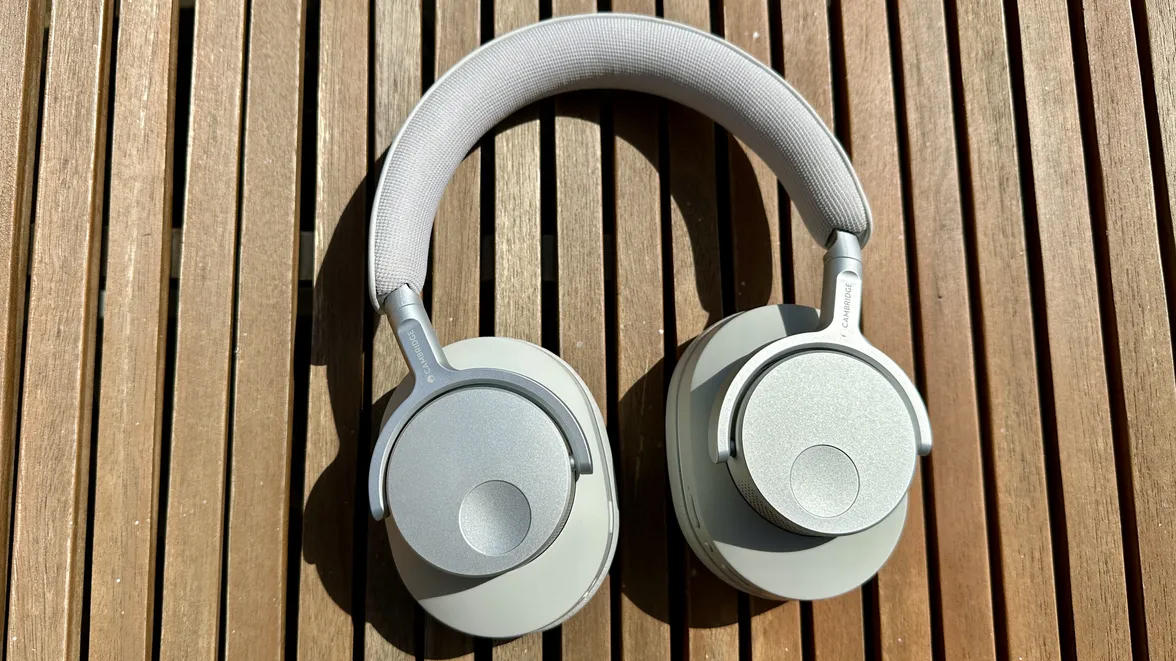
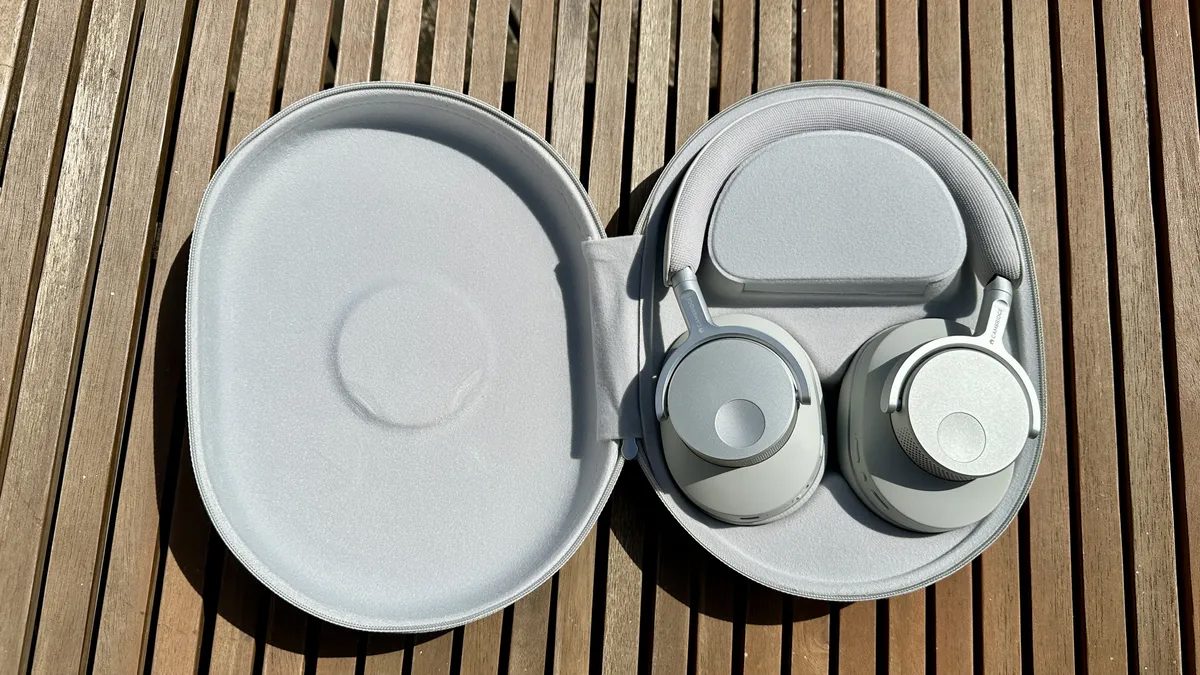

Specifications
Reasons to buy
Reasons to avoid
The reason these headphones are our top pick for battery life is they last an incredible 100 hours. Yes, you read that right. Although that's without ANC and we assume if you're reading this guide you absolutely need noise cancelling. In that case, you'll get 60 hours from them, which is still incredibly impressive compared to rivals.
We were extremely impressed by the sound quality of the Cambridge Audio Melomania P100, praising their "lively, detailed and confident presentation". You'll get the best experience from them with 16bit/44.1kHz FLAC files from the likes of Qobuz or Tidal. But, as we wrote in our review, "they don’t judge – give them what you’ve got and they’ll do their best with it."
During our testing we were also impressed by the different customization options on offer here, like the effective seven band EQ. Noise cancelling is impressive – and most people will love the experience here – but it's worth mentioning you will find better and more immersive ANC elsewhere in this list. What you get from these Cambridge Audio over-ears is very good, but not great.
Design-wise, these headphones tick all of the boxes. In our review we wrote: "They look, and feel, like a reasonably upmarket pair of wireless over-ear headphones." The earpads are detachable and made from a nice mix of vegan leather and memory foam. While the headband is padded on the inside. The overall package is 330g, which is pretty standard and makes them comfortable to wear. The only downside when it comes to design is they don't fold up small, so if you're using them to travel bear in mind their case will take up a lot of space.
Read our full Cambridge Audio Melomania P100 review
Attributes | Notes | Rating |
|---|---|---|
Design/comfort | A very well built and comfortable pair of headphones. The only downside is the case is a little too big. | 4.5/5 |
Active noise cancellation | We'd describe the ANC here as "very good" instead of great, but it'll still suit most people perfectly. | 4/5 |
Sound quality | Some of the best-sounding headphones overall. Expect a lovely tonal balance, packed with detail and energy. | 4.5/5 |
Battery life | Great battery life at up to 100 hours, which makes them a top choice for long journeys. | 5/5 |
The best noise cancelling headphones for Sony fans
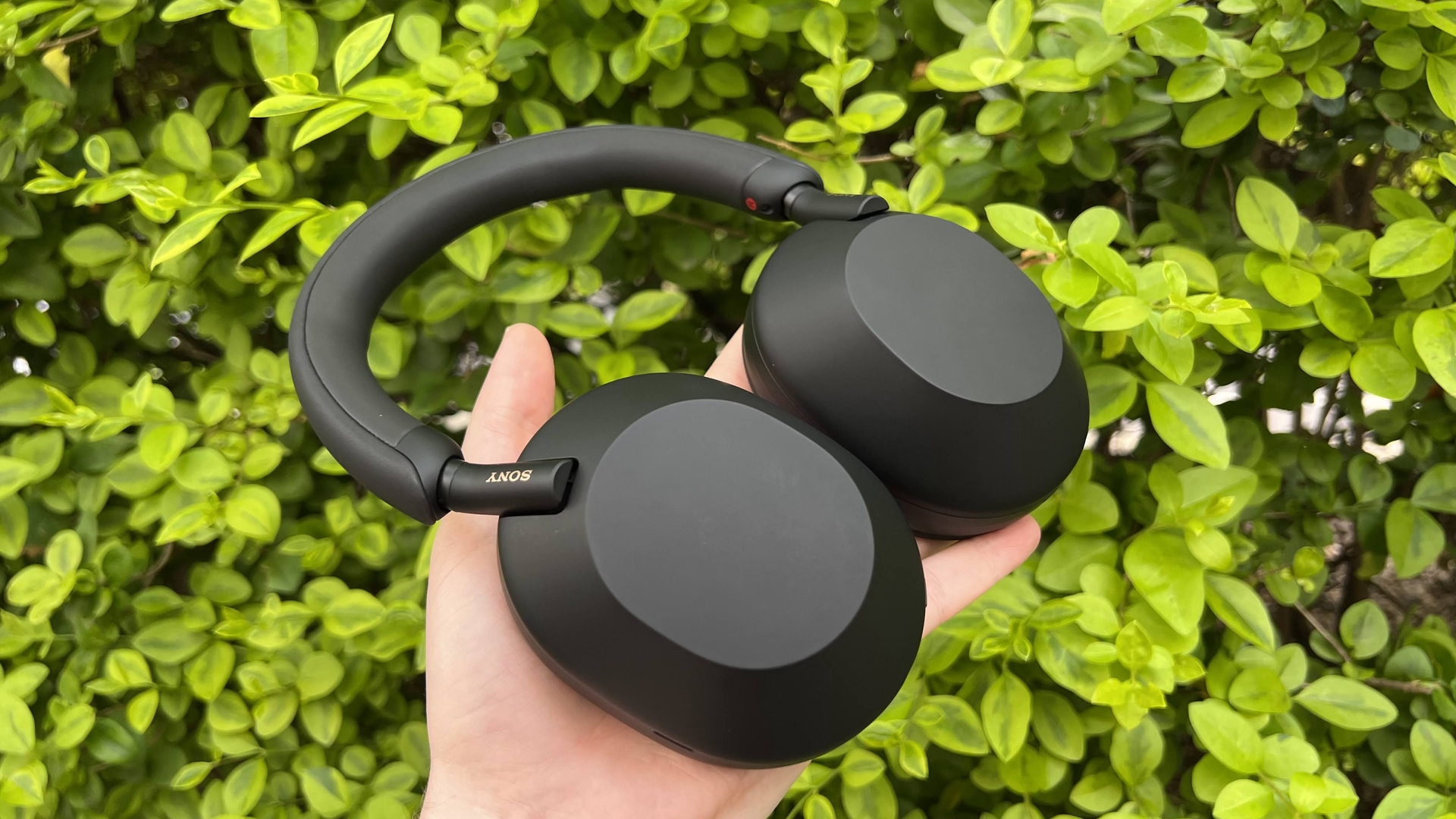
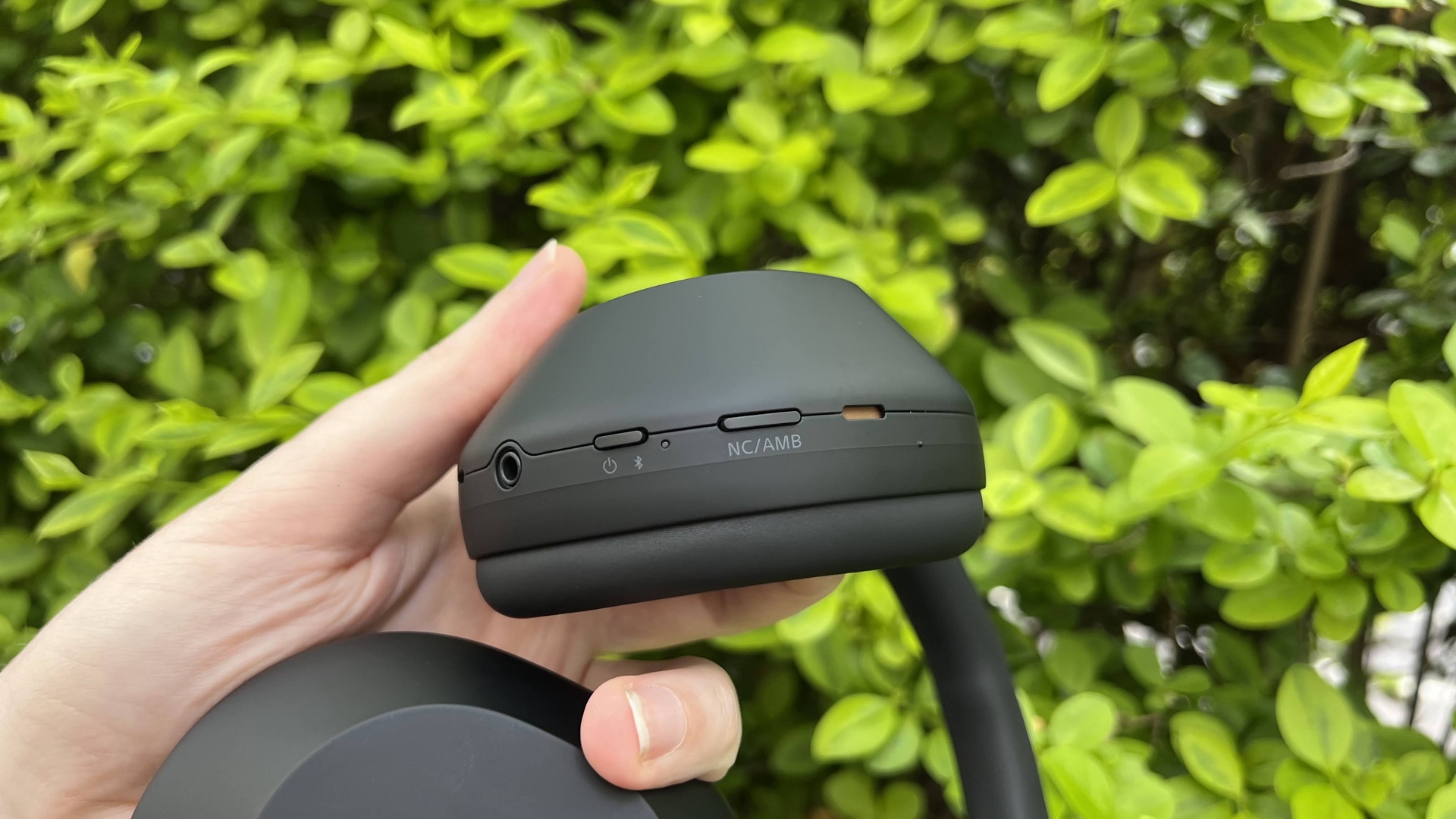
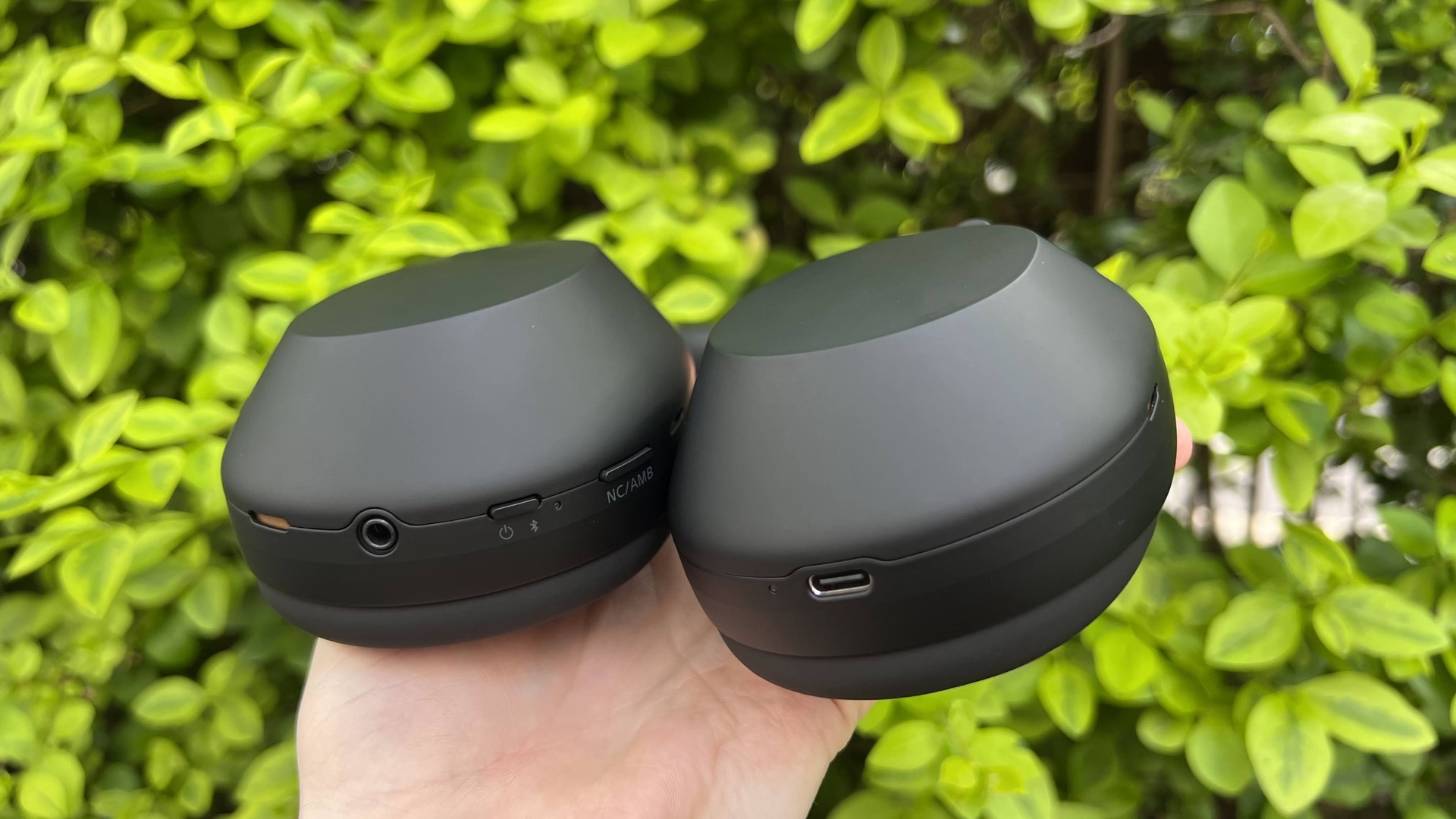
Specifications
Reasons to buy
Reasons to avoid
These are Sony's best noise-cancelling headphones without question, if price is no object. Their noise cancellation is better than the Sony WF-1000XM4 at the top of this list, as is their sound quality. But they're also significantly more expensive, and their upgrades over the older model aren't huge, which is why we still think that the XM4 are the better-value buy for most people.
But the Sony WH-1000XM5 are definitely superb headphones, make no mistake. They have a premium build (though they don't fold up any more, unlike the XM4, which is a bit of shame), with a "spacious and capable" soundstage (as described in our review), and noise cancellation that we called "very impressive" at stopping higher-end sounds compared to the XM4.
The difficult thing for the Sony WH-1000XM5 is that we think the Cambridge Audio Melomania P100 could be a better choice for some people, delivering double the battery life. And if active noise cancellation is your priority, the Bose QuietComfort Ultra Headphones are even better (for a higher price, though), and again are a step up in music quality.
We've included them in this list because there are plenty of Sony headphones lovers who want to know where the company's best headphones are in the rankings – and we do think they're excellent headphones by any measure. It's just that they're beaten on value by the XM4, on sound quality and features by the Sennheisers, and on noise-stopping power by the Bose Ultra.
Read our full Sony WH-1000XM5 review
Attributes | Notes | Rating |
|---|---|---|
Design/comfort | An all-new design that's very comfortable. The only downside is they don't fold up like other designs. | 4/5 |
Active noise cancellation | The ANC on offer here is superb with some smart ambient awareness options. | 5/5 |
Sound quality | A spacious soundstage with powerful bass and impressive detail. Spatial audio, LDAC and DSEE Extreme support. | 5/5 |
Battery life | Battery life here is good, but not great. If you're looking for a pair of travel headphones, these might not be the best bet. | 3.5/5 |
The best noise cancelling headphones for Apple fans
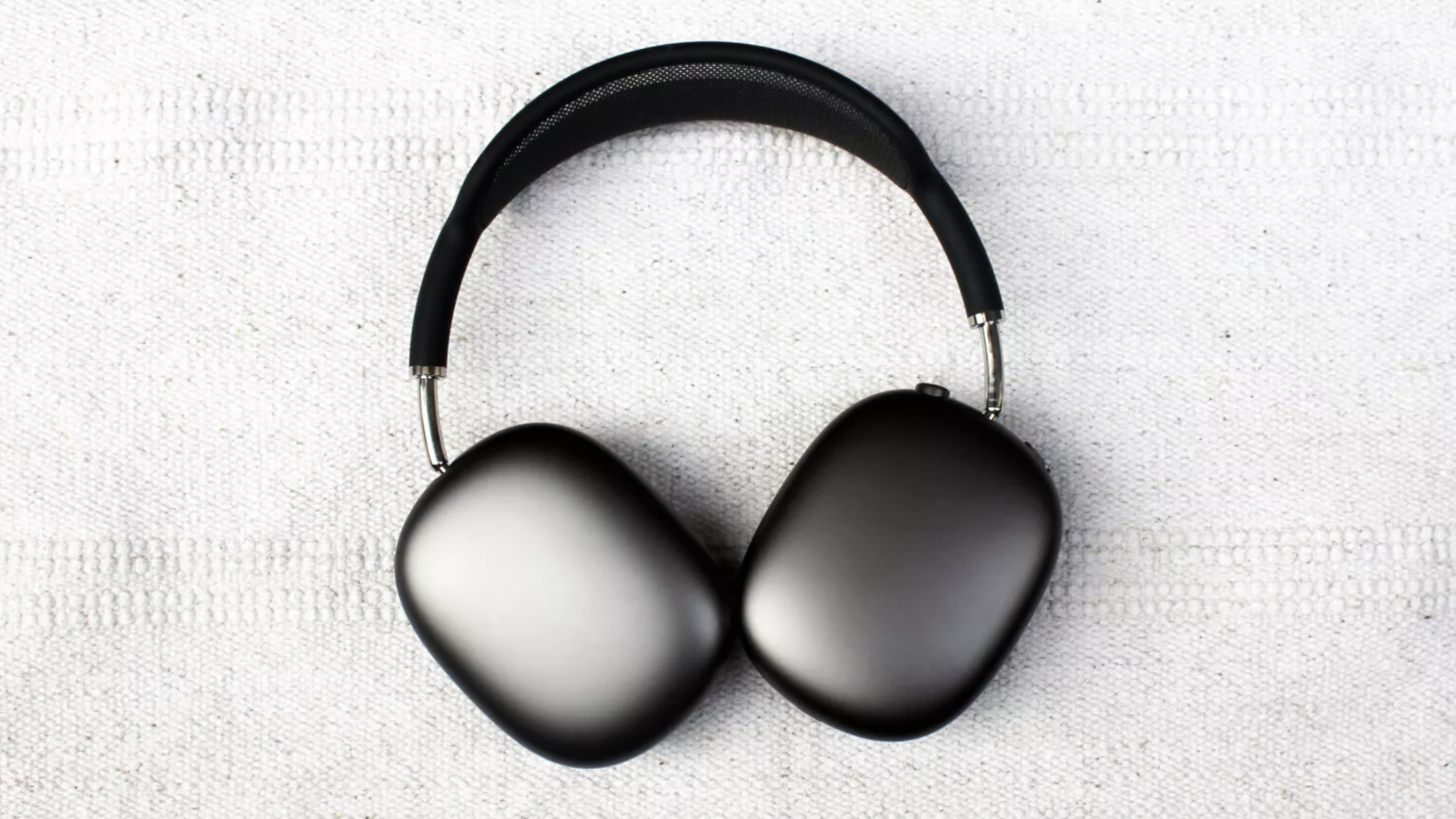
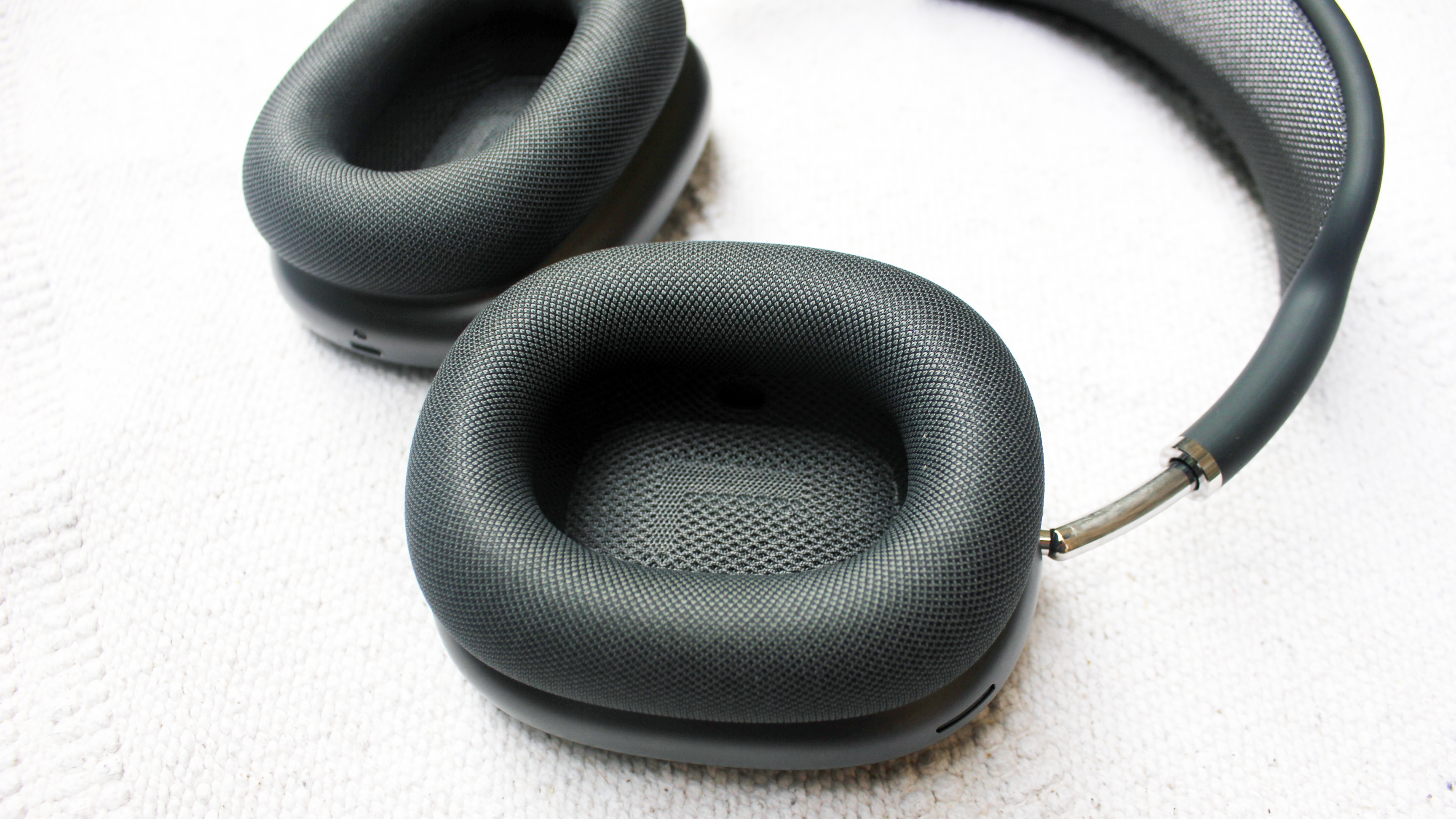
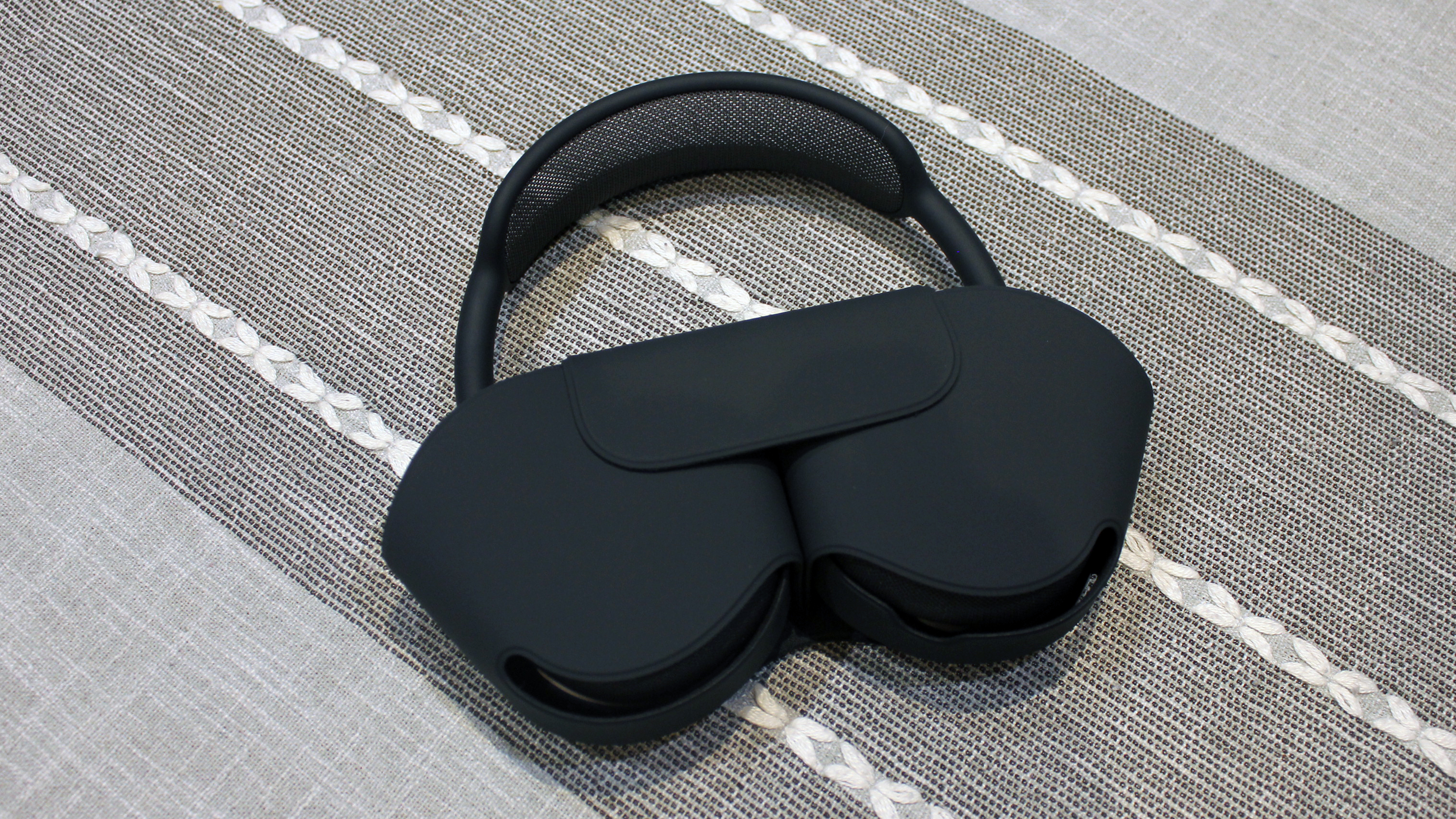
Specifications
Reasons to buy
Reasons to avoid
We were expecting the next iteration of Apple's over-ear headphones, the Apple AirPods Max 2, to be announced at Apple's Glowtime showcase on September 9, but it looks like we'll have to keep waiting. Apple did announce some upgrades to the original Apple AirPods Max, however, including several new colors (Midnight, Purple, Orange, Starlight and Blue) and USB-C charging, but all for the same $549 price tag.
The Apple AirPods Max come with active noise cancellation, superb audio quality, and a striking design that makes them instantly recognizable, and that feels immensely high-quality. During our testing, we were truly impressed by these headphones, but they were never ideal for everyone, and more recently have been undermined by the Bose QuietComfort Ultra Headphones – but there are still good reasons to choose the AirPods Max.
Their sound is immensely expansive, natural and rich, and they offer easily the most impressive spatial audio 3D sound support of any headphones when used with an Apple device. Watching a Dolby Atmos movies with these headphones in feels stunningly close to sitting in speaker system rather than sandwiched between two headphones drivers, with the sound removed from your ears and convincingly placed in the room around you, all aligned to the screen you're watching on. And music, whether in Dolby Atmos or not, is layered, meticulously clear, crisply defined, and effortless. The active noise cancellation is high-end too.
However, their high-price hasn't aged well. The Bose QuietComfort Ultra Headphones sound at least as good, with even better noise cancellation, and are cheaper, lighter and more portable. The AirPods' lack of Hi-Res Audio option, or even a real 3.5mm jack, also grates in an era when Apple Music does such high-quality sound.
But their Apple-specific features mean they're still commendable for those with lots of the company's devices. Aside from the spatial audio sound, they auto-switch between any number of devices, they have Find My support, they can share audio with other AirPods, and you can personalize the sound. For Android users, they're not worth it.
Read our full Apple AirPods Max review
Attributes | Notes | Rating |
|---|---|---|
Design/comfort | Distinctive, bold and comfortable. Some people report a strong clamping force and we don't like the case. | 4/5 |
Active noise cancellation | Noise cancellation is really impressive here. Perhaps not as good as Bose and Sony, but up there. | 4.5/5 |
Sound quality | Exceptional audio performance. Even a few years after launch, this is some of the best spatial audio around. | 5/5 |
Battery life | Enough battery life for most people, but you can do much better these days. | 3.5/5 |
The best noise cancelling headphones for sound
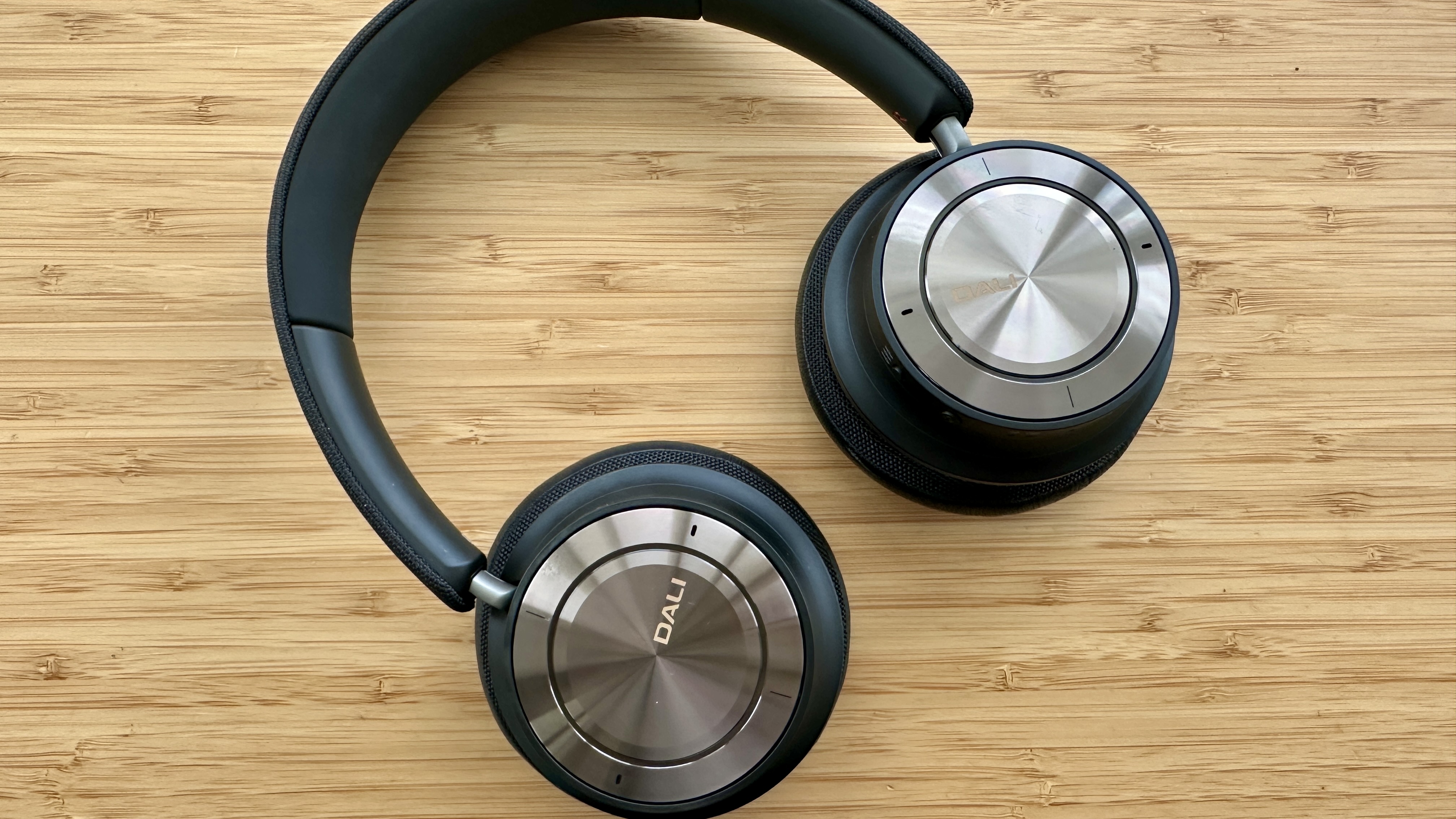
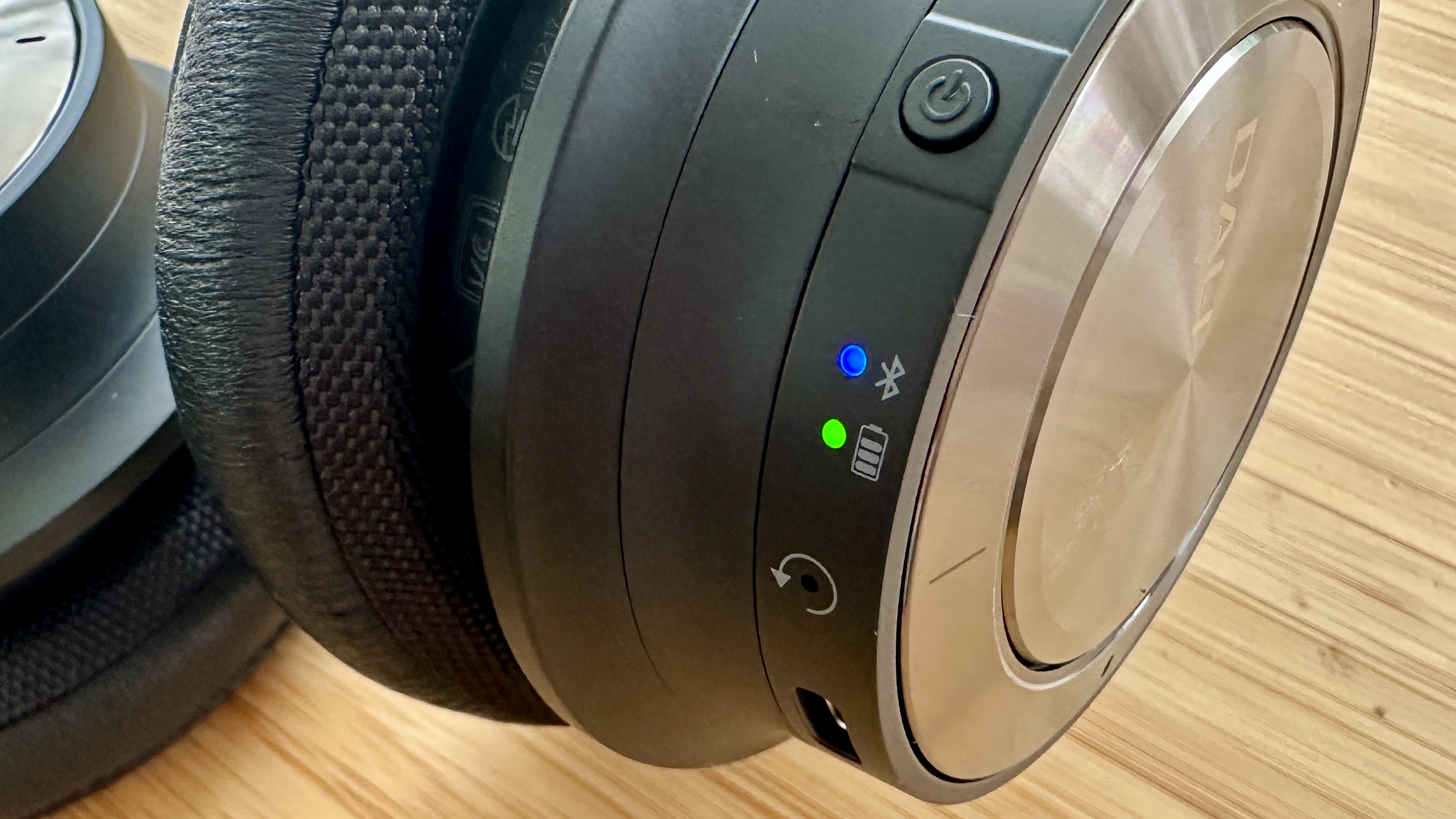
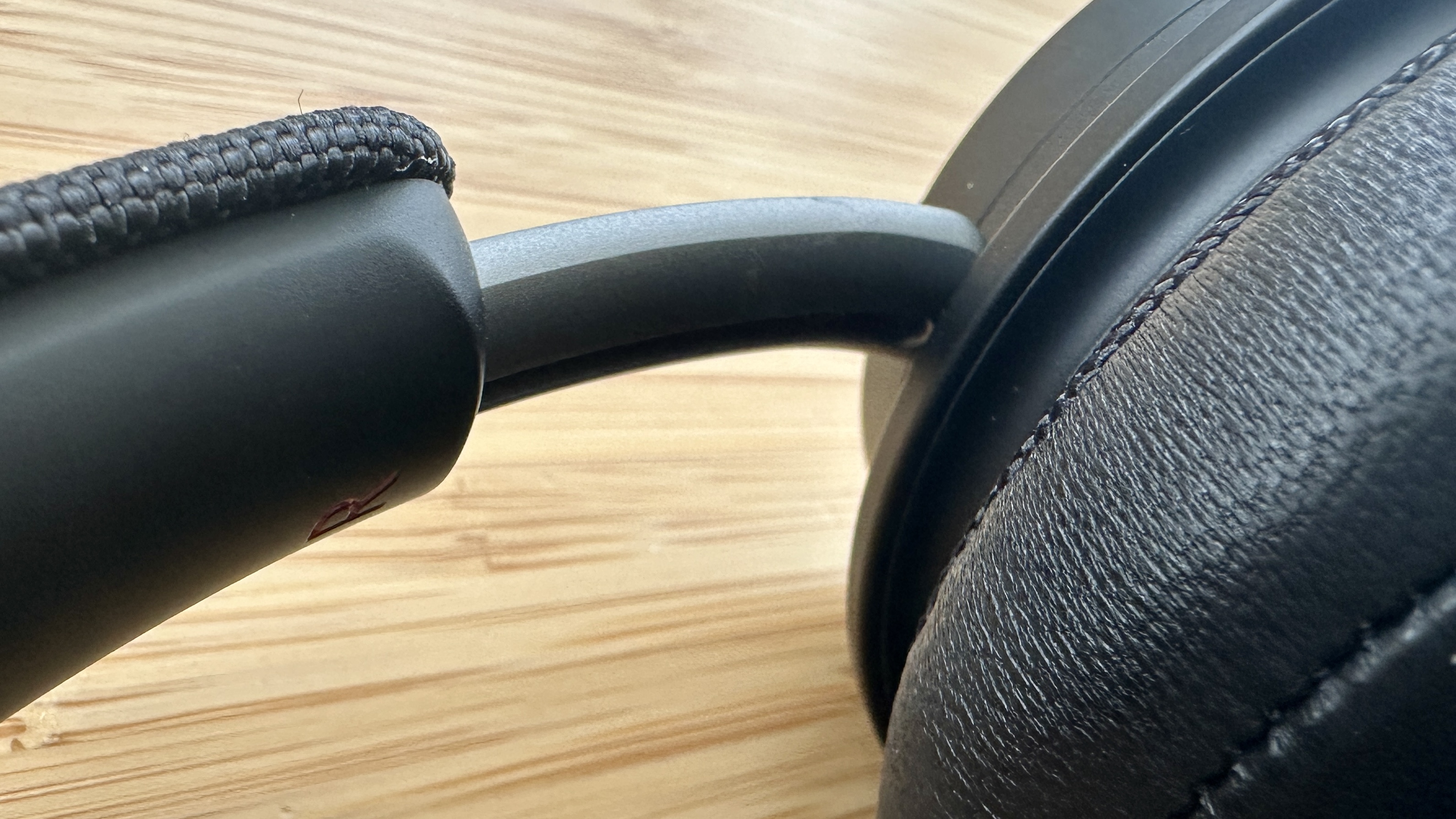
Specifications
Reasons to buy
Reasons to avoid
If you're looking for sonic excellence, you may find it in the Dali IO-8 headphones. In our review, we struggled to find anything to criticize when it came to the way these lovely-looking headphones sound. The audio on offer here is directful, insightful and an absolute joy to listen to. During testing, we noted that this remarkable detail retrieval and full expression didn't impact the bigger picture with a large and persuasive soundstage. We wrote: "The Dali create a large overall image, and it’s only when you peer closely at it that you realise just how alive with detail it is." This audio is only made more immersive, more fun, by noise-cancelling, which we rated as "very good" in our review, meaning it can be bested but only by a select few, like Bose.
As well as sounding fantastic, the Dali IO-8 headphones look the part. They have a premium build and finish with a distinctive design thanks to perfectly circular cups. The earpads are incredibly comfortable thanks to memory foam lining the interior and there's a handy adjustment mechanism to get the perfect fit. The only design downside is these aren't vegan-friendly. Yes, leather may signal luxury to some but we'd bet most people would prefer a version without it.
There's a solid 35 hours of battery life onboard. But if you're the type of person that forgets to charge your tech (we get it), then you'll also be happy to hear the Dali IO-8 can work as passive wired headphones, too. The only notable omission here is there's no control app and only two EQ settings. You could argue that most people shouldn't be messing around with the sound here anyway – we didn't feel like we needed to during testing – but some people might want more freedom in that respect.
Of course, these over-ears aren't cheap. But that doesn't mean they aren't excellent value considering the audio quality on offer here. In fact, the features, feel, look and sound of the Dali IO-8 headphones are all well up to the standard of the asking price.
Read our full Dali IO-8 review
Attributes | Notes | Rating |
|---|---|---|
Design/comfort | A high standard of build and design. Comes in two different colorways with real leather contact points. | 4.5/5 |
Active noise cancellation | Fantastic ANC on offer here. Not as good as Bose, but still very, very good. | 4.5/5 |
Sound quality | Nothing negative to say about the sound. It's detailed and expansive, with dynamic presentation and great low-end expression. | 5/5 |
Battery life | A solid amount of battery here for most people. And if they run flat? They can be used passively, too. | 4/5 |
The best noise cancelling headphones for design

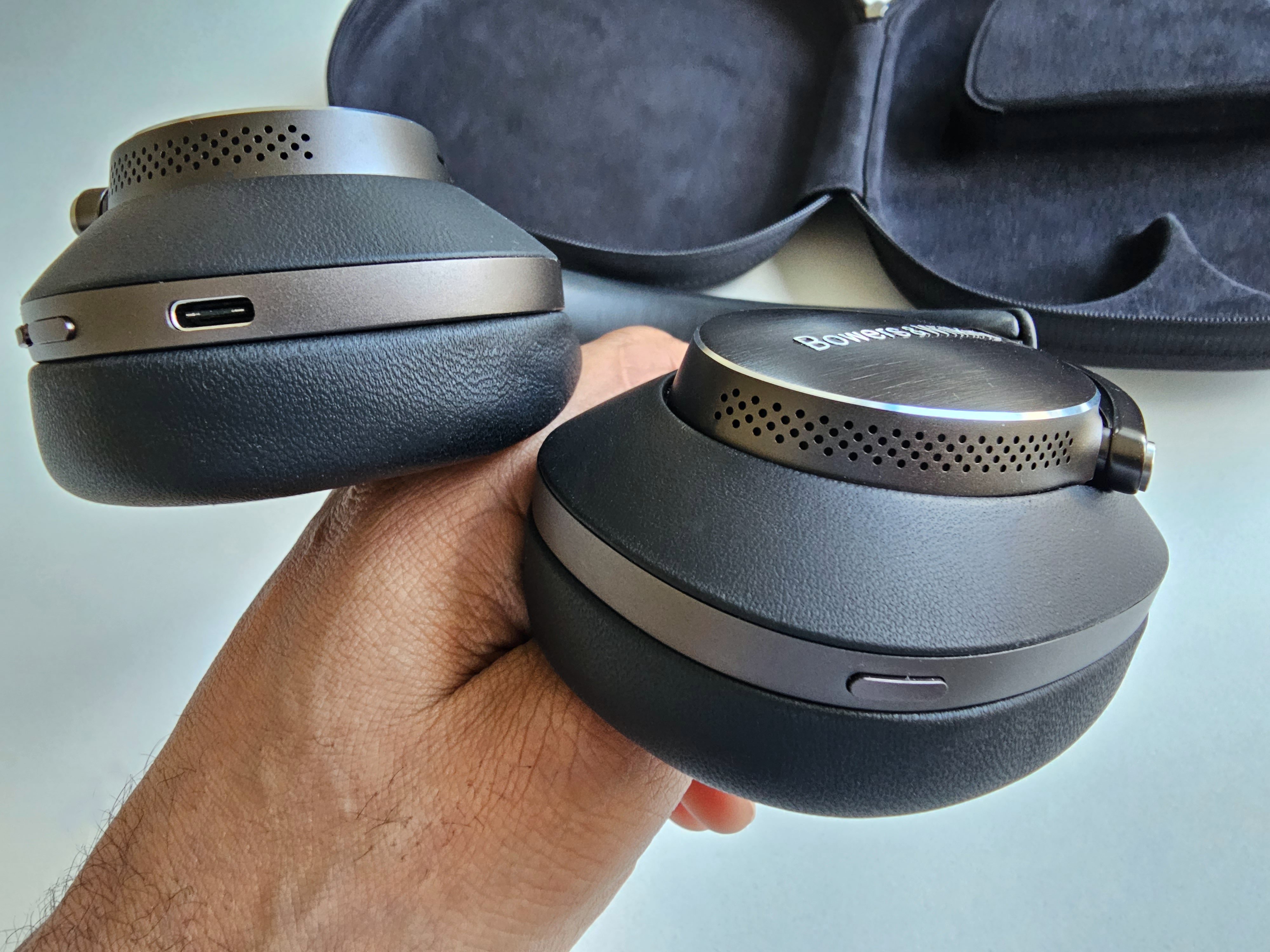
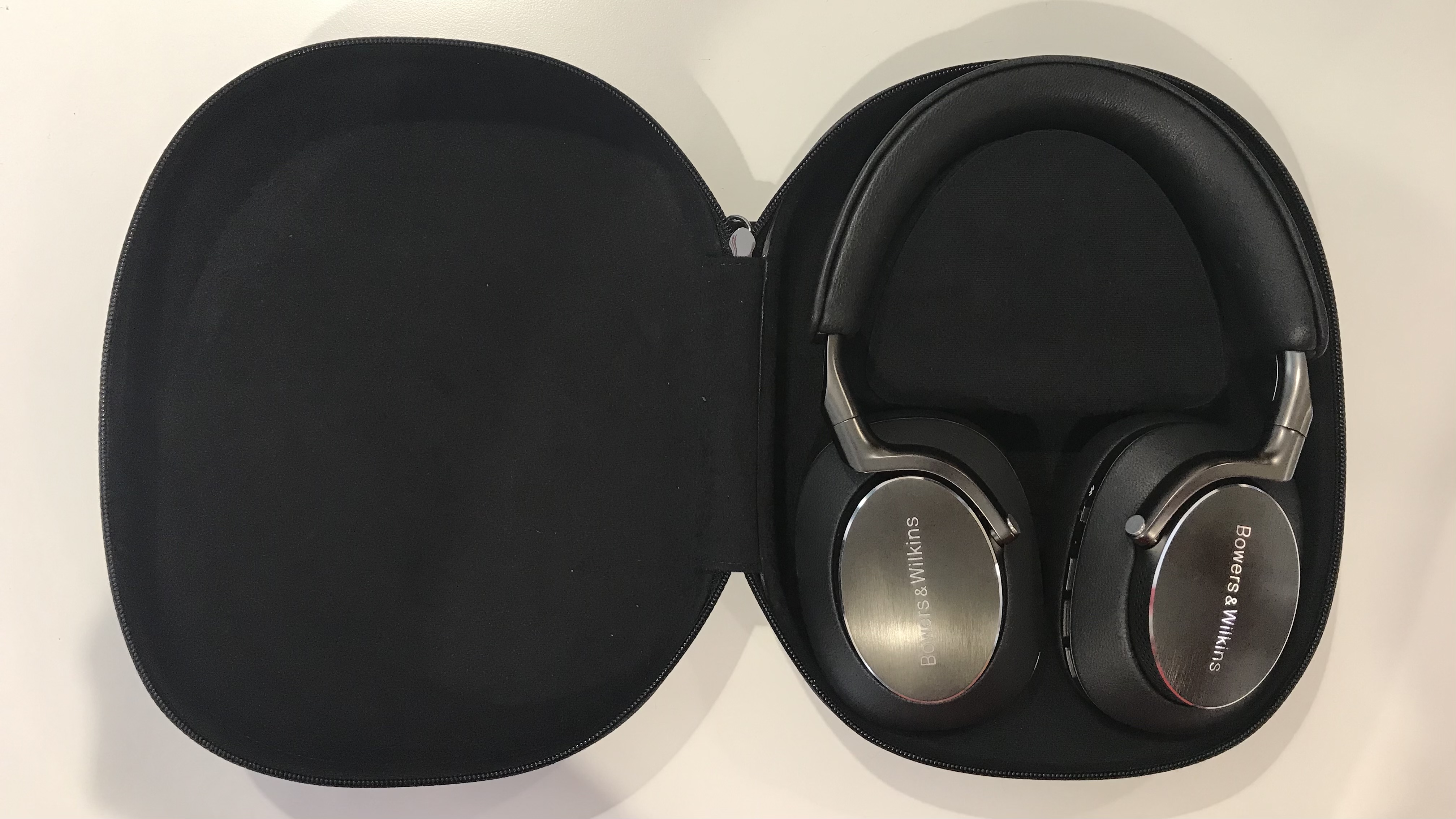
Specifications
Reasons to buy
Reasons to avoid
Bowers & Wilkins knows how to achieve premium audio quality, and its flagship wireless headphones are proof of that. Yes, the ANC is OK rather than wonderful, which is why they're this far down this article – but noise nixing does feature, and it helps you to actually hear the sound quality over the din around you. And what sound quality – we said in our review that these cans boast "oodles of detail, agility and expanse" that you rarely get from wireless headphones. It's exceptional and well worth the extra money, especially combined with their especially cool design.
They marry subtlety and flair in a way that few over-ear headphones have managed, with shimmering diamond-cut metal details contrasting with a luxe Nappa leather headband. It's not just style over function either, as the drivers inside the chunky ear cups have been angled to sit parallel to your ears (rather than parallel to the outside of the earcups) for the seamless timing and precise sound that makes them so enjoyable to listen to. In both the audio and looks department, they're pushing the envelope, but don't go too far – super-desirable.
But the price makes them niche, no question, especially when – as mentioned above – the noise cancellation is weaker than some headphones half their price, and is far behind what the Bose QuietComfort Ultra Headphones offer. But oh, none of those headsets has such a satisfying look and feel.
Read our full Bowers & Wilkins PX8 review
Attributes | Notes | Rating |
|---|---|---|
Design/comfort | A truly stunning pair of over-ear headphones. They don't just look good but feel fantastic with the perfect clamping force. | 5/5 |
Active noise cancellation | The ANC here is good, but it doesn't quite live up to the level of the design or audio – as well as the price. | 4/5 |
Sound quality | You'll thoroughly enjoy the supreme agility and musical clarity on offer here. There's also plenty of oomph and energy. | 5/5 |
Battery life | Battery life is pretty standard compared to rivals. Not bad, just not the best – especially for long journeys. | 3.5/5 |
Best for smaller heads
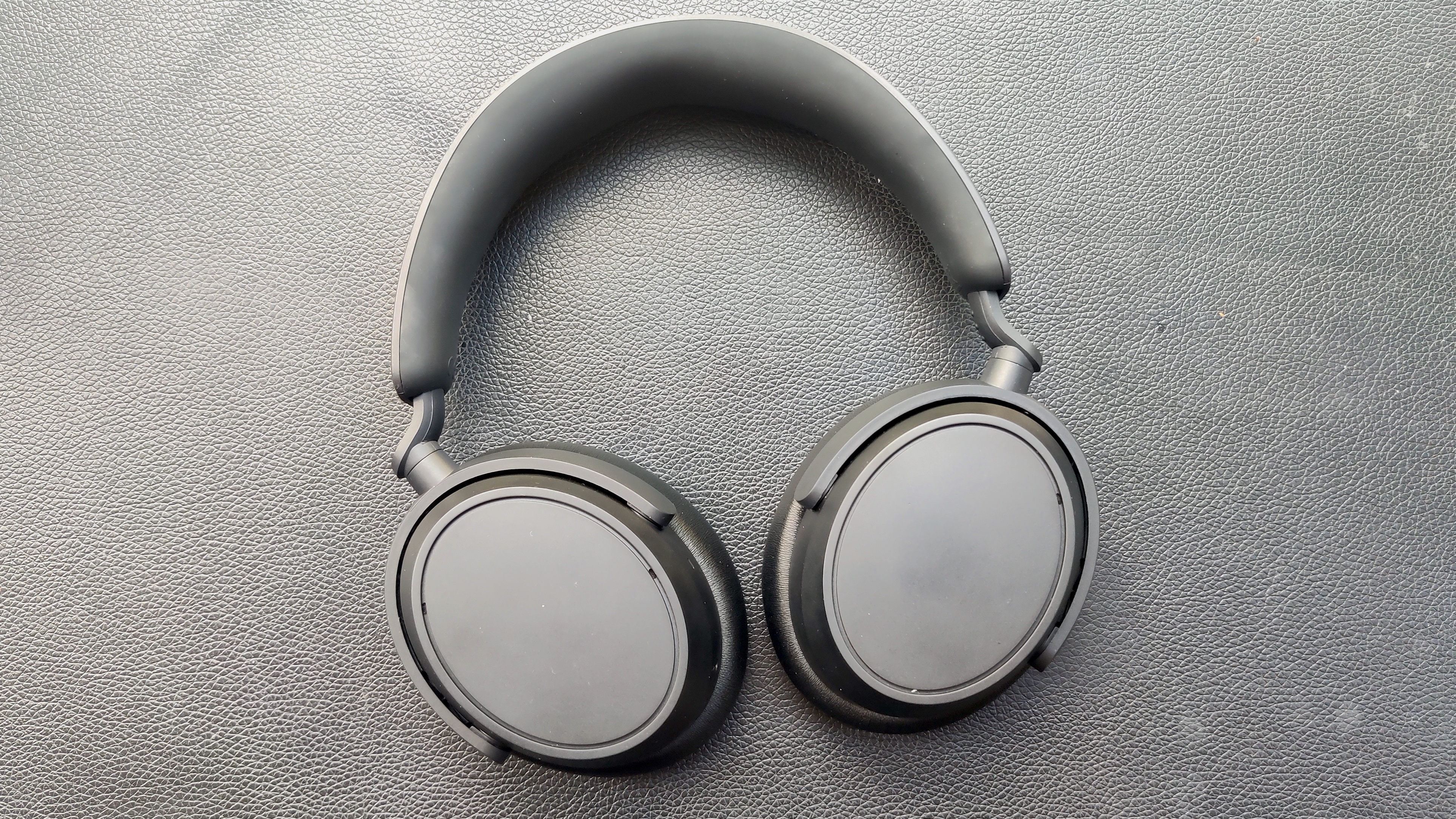
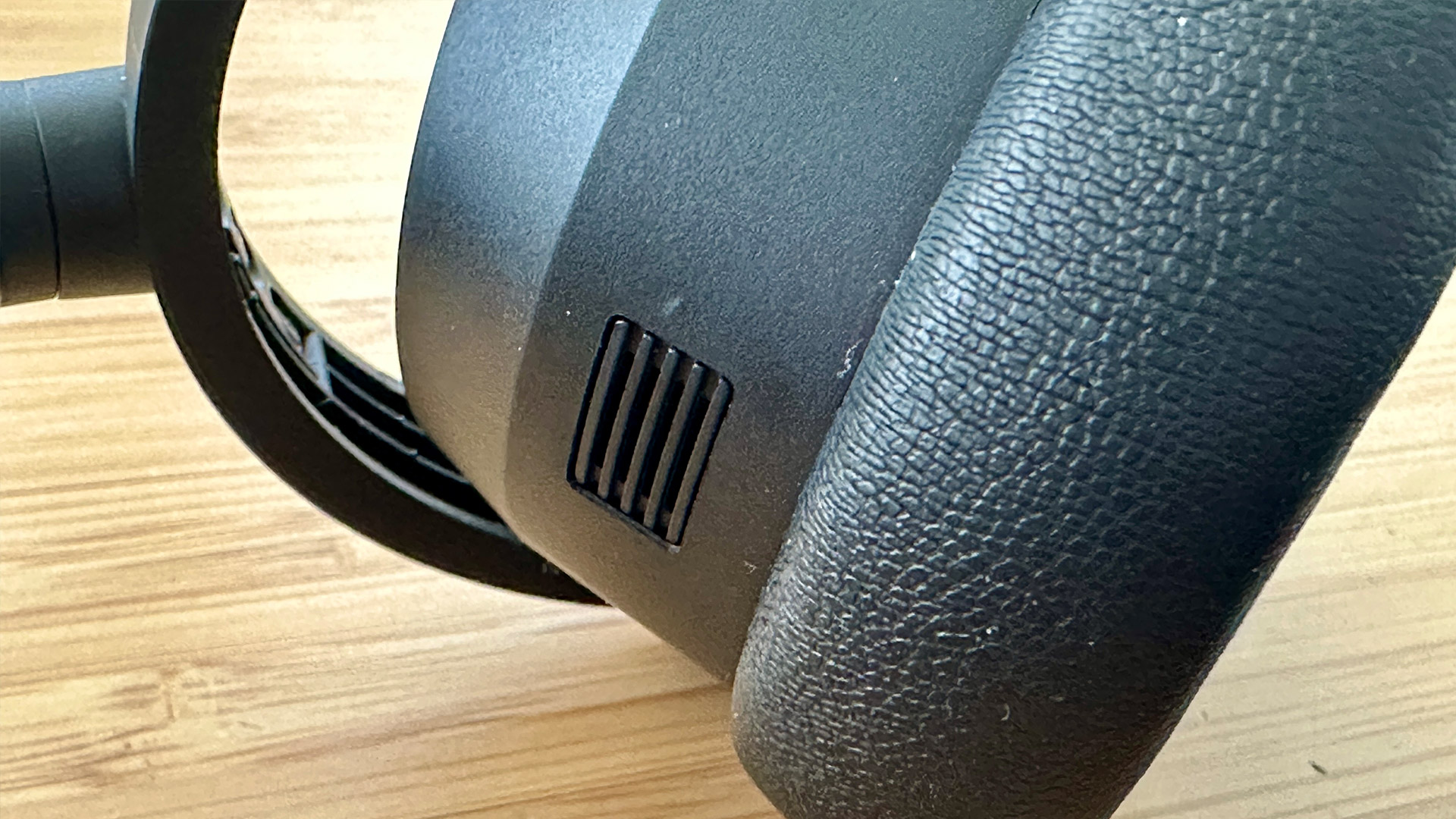
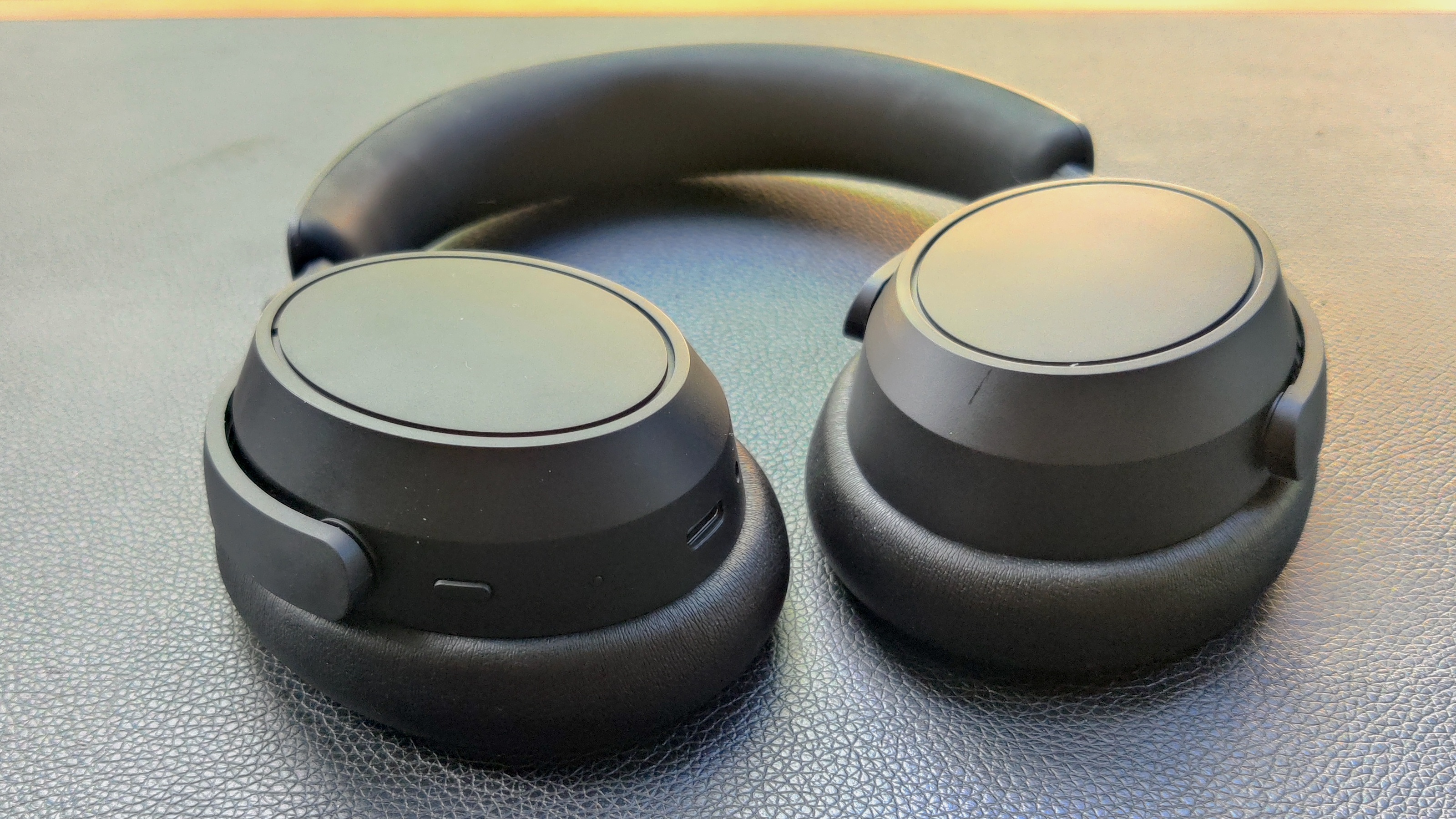
Specifications
Reasons to buy
Reasons to avoid
Sennheiser's February 2024-issue over-ears sit nicely between the company's entry-level Accentum and flagship Momentum 4 Wireless listed above – and if you're stuck trying to decide which to get, allow us to tell you that sonically and for active noise cancellation, these represent excellent value for money.
That said, while the build is classy and expertly finished, these are hardly 'look at me!' headphones and if you're spending step-up money, you may have wanted a step up in terms of aesthetics.
What you do get is aptX compatibility, a whopping 50 hours of battery life (which is masses of stamina for ANC cans) and a 3.5mm jack for wired listening. Considering we loved their more expensive siblings, this is very very good news.
Any issues? Well, that depends. Some of us often struggle to find over-ears that don't fall off or head down to the back of our crown at their earliest convenience. That won't happen here – in fact, if your skull is on the smaller side you will love these. Larger headed? You may find the clamping force just a little heavy here.
Read our full Sennheiser Accentum Plus review
Visit our Sennheiser coupon page for our latest deals and discounts.
Attributes | Notes | Rating |
|---|---|---|
Design/comfort | A nice design and decent build with small enhancements over the previous version. The clamping force can be a bit snug though. | 4.5/5 |
Active noise cancellation | The noise-cancellation is good here. Not as good as other options, but most people will be happy with the level of noise-silencing here. | 4.5/5 |
Sound quality | An all-round assertive and bold listen. Although frequency balance skews towards the lower end. | 4.5/5 |
Battery life | An impressive 50 hours of battery life. Some options do it better these days, but this is better than average. | 4/5 |
The best noise cancelling headphones for movies
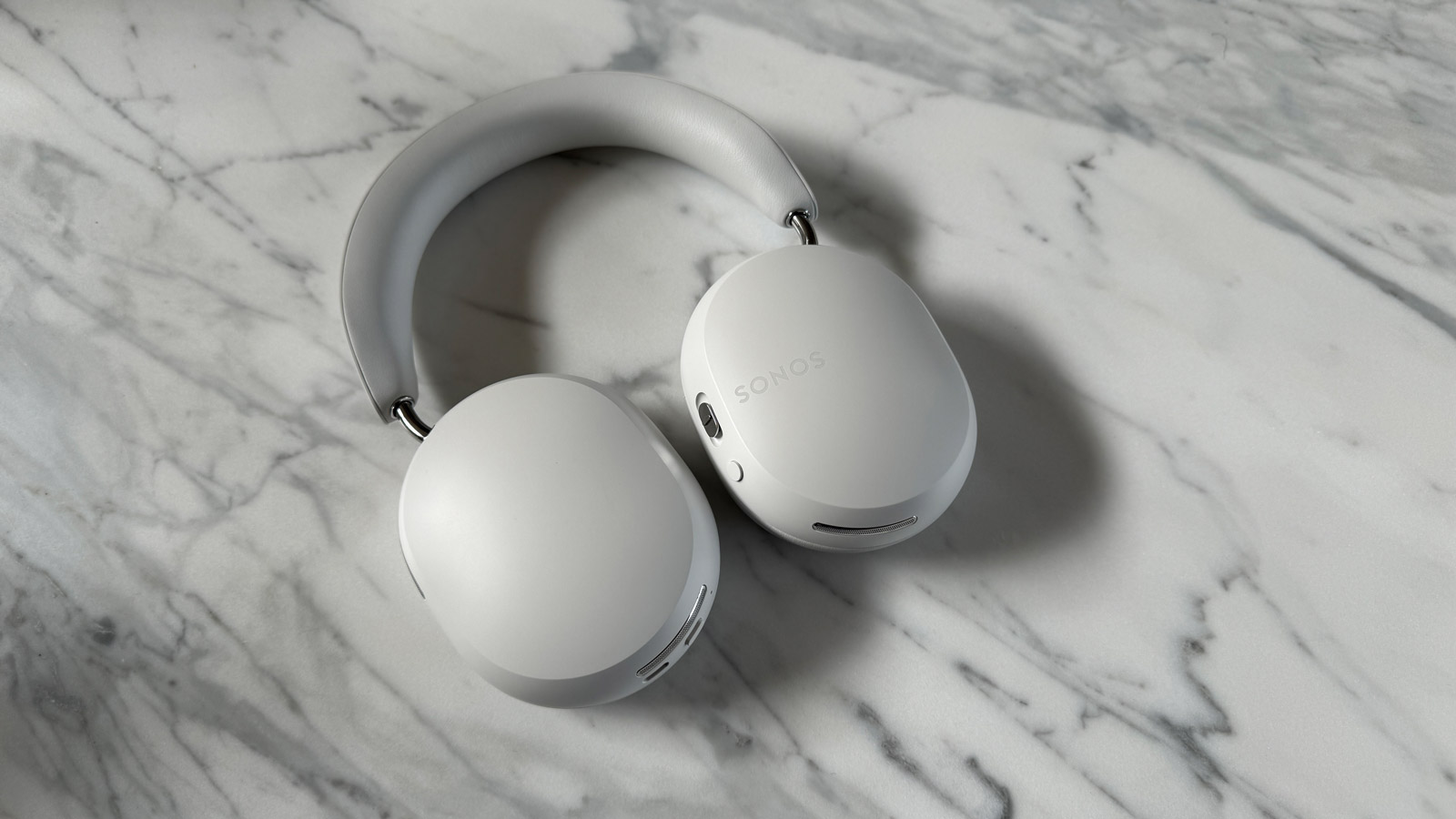

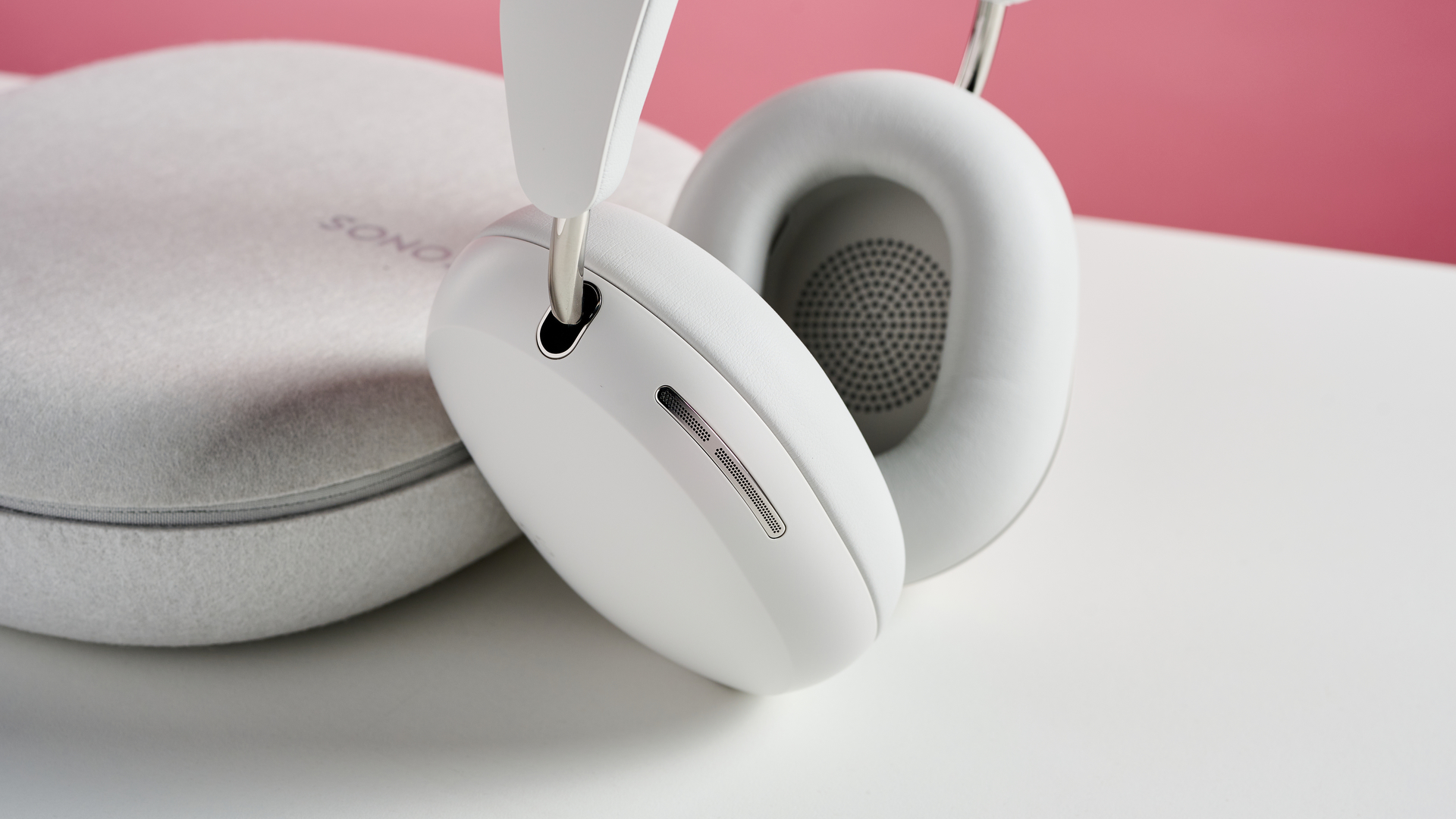
Specifications
Reasons to buy
Reasons to avoid
Sonos' very premium headphones come with some very premium features that have earned them their place on this list: in particular, their highly effective noise cancellation, and their superb head-tracked spatial audio. The Sonos Ace deliver the best sound balance for watching movies, based on our testing that directly compared them with the Bose QuietComfort Ultra Headphones and the AirPods Max. And they do this over Bluetooth from any source that decodes Dolby Atmos, or using a special connection to a Sonos Arc soundbar (with support for all recent Sonos soundbars coming in the future).
With movies, we found that the sound mix on the Sonos Ace allows speech to come through really clearly, while still providing plenty of power for bassy elements, such as explosions. But everything stays in its own lane – the bass power doesn't overwhelm other aspects. And the feeling of surround sound is really strong, with elements moving around the room around your head convincingly. Tied to that, the head-tracking is accurate and lag-free.
The fact that there's a button to instantly switch from listening via Bluetooth to the Sonos soundbar connection makes it really convenient as well – just grab and instantly to your TV to watch movies or play games with really dynamic and big sound, without disturbing anyone else (or being disturbed by them, thanks to the ANC). The only thing to note is that the 30 hours of battery life over Bluetooth drops to around just 10 hours (based on our measurements) when connected to a Sonos soundbar.
Beyond this, the Sonos Ace are very well-featured headphones, packing in lossless Hi-Res Audio over USB-C, aptX Adaptive for CD-quality wireless audio, and a transparency mode (that's very transparent, a little too much in our opinion). The design feels very very premium and is generally extremely comfortable, though we found that glasses wearers had a harder time than others.
However, the music playback quality isn't quite where it needs to be, considering the high price. It's very good, but it should be amazing. The noise cancellation is also weaker than the Bose Ultra headphones, though is better than almost anything else. So, as the ranking in this guide suggests, we'd steer most people towards the Bose Ultra, but if movies are a particular priority, the Ace are worth serious consideration.
Read our full Sonos Ace review
Attributes | Notes | Rating |
|---|---|---|
Design/comfort | They look and feel premium and plush. Some people find them comfortable, others don't get on with the fit for long periods of time. | 3.5/5 |
Active noise cancellation | The ANC here is good, but it's definitely weaker than top rivals from Bose and Sony. | X/5 |
Sound quality | Epic, Dolby Atmos movie sound. Although if you just want to listen to music, they're not the best option for you. | 4/5 |
Battery life | Battery life is good for movies and at-home use, but you'll find much longer options in this list for travel. | 3.5/5 |
The best noise cancelling headphones for EQ tweaks
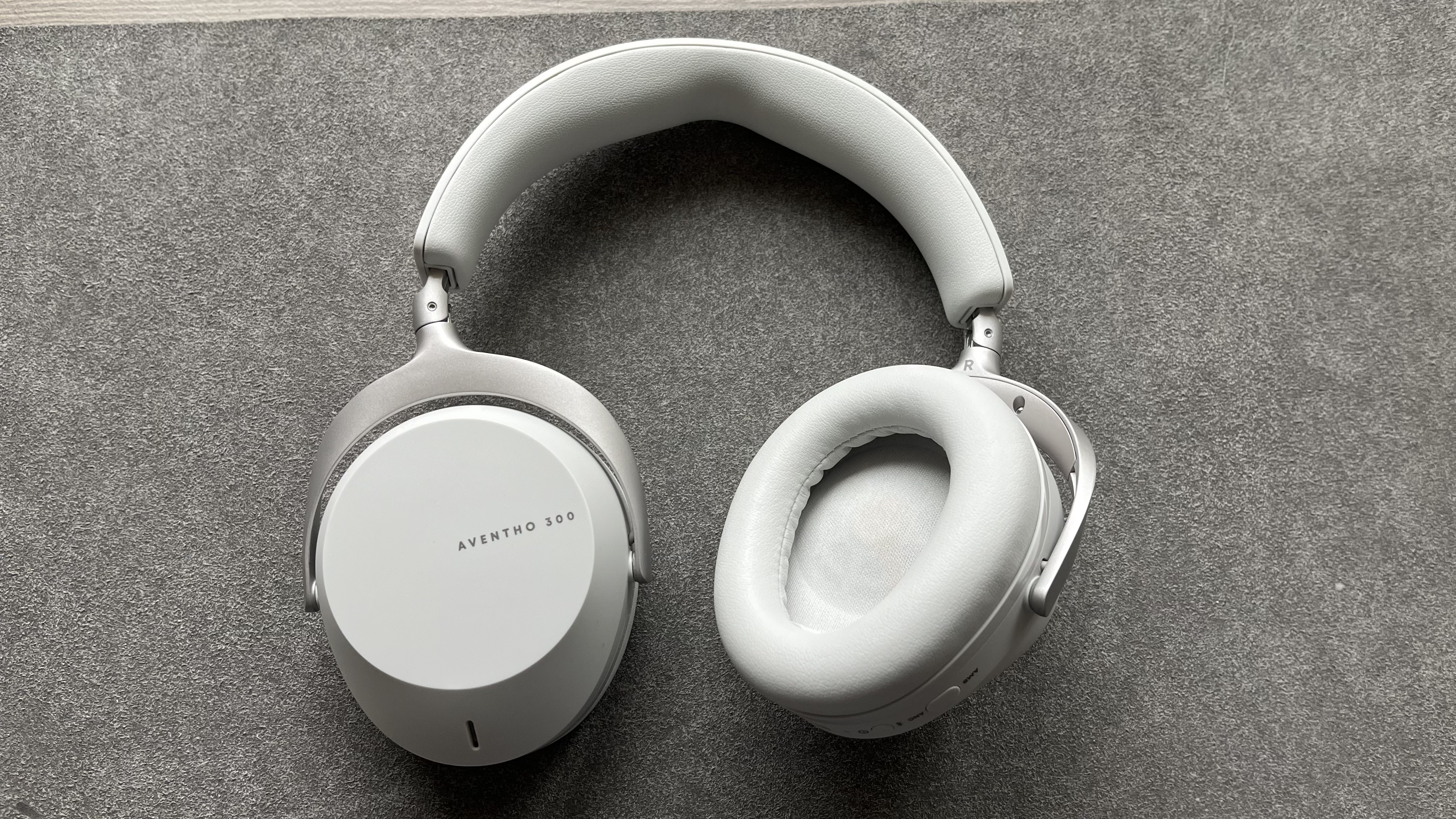
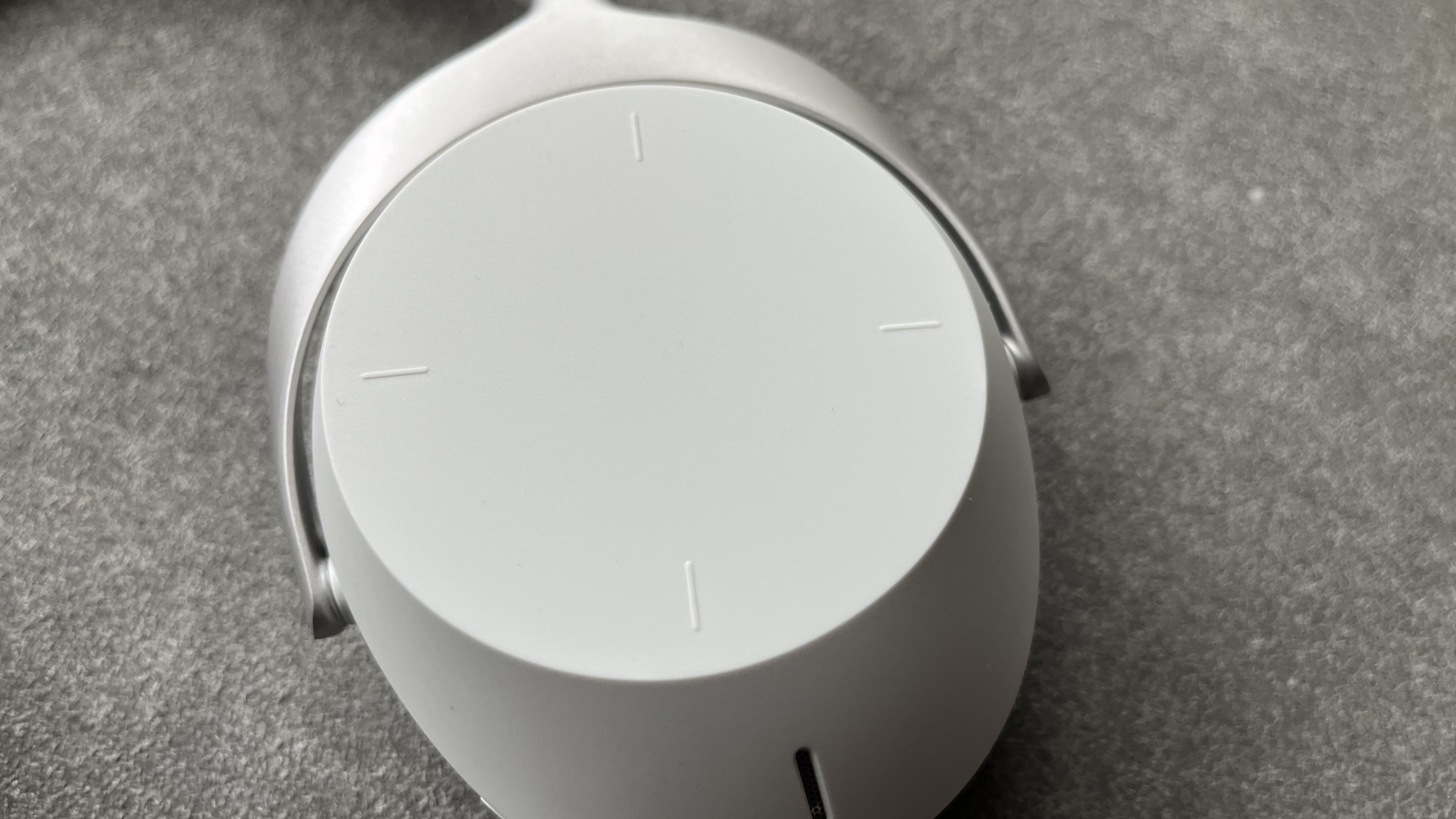
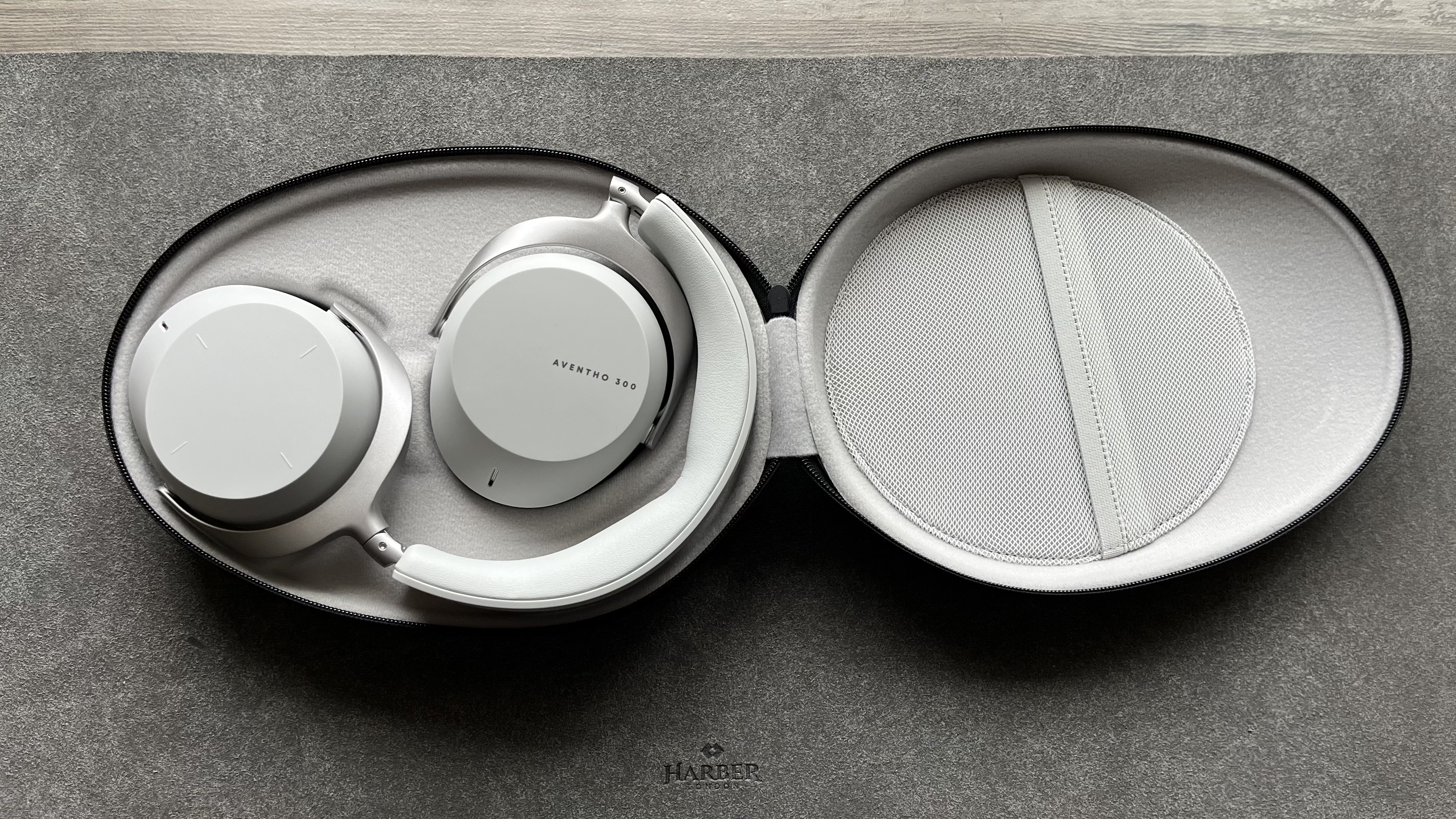
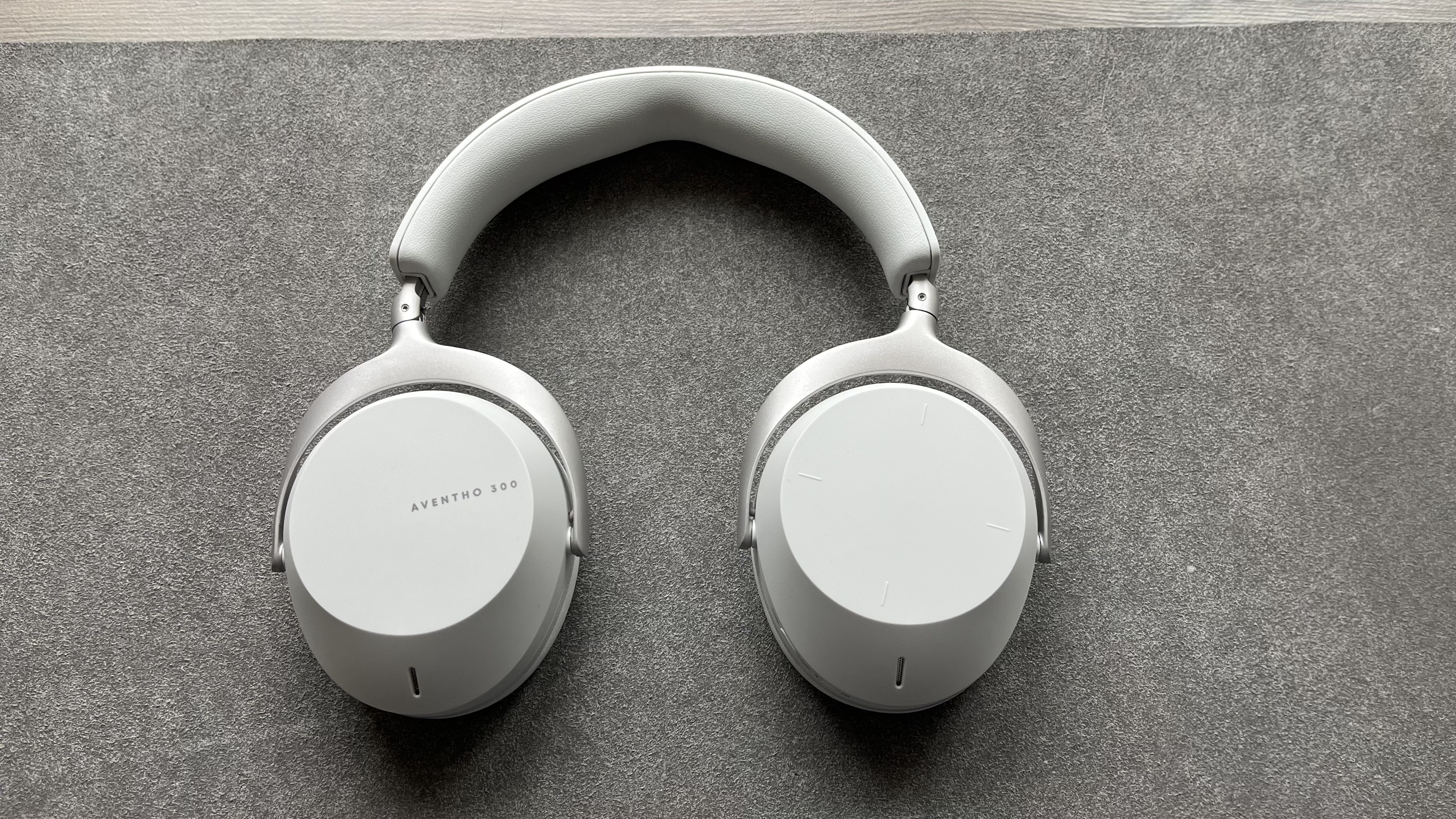
Specifications
Reasons to buy
Reasons to avoid
The Beyerdynamic Aventho 300 over-ear headphones are excellent all-rounders, offering great sound, solid noise cancellation, and impressive customization options. What truly sets them apart is their EQ settings, which bring you a high level of flexibility through the app.
The app features six EQ presets and a five-band graphic EQ, which allows you to boost or cut up to six dB and save your custom curve. Beyond EQ, the app also lets you adjust ANC and ambient mode levels, and includes Dolby Atmos and head-tracking settings, which we found particularly useful during testing.
The active noise cancellation performs well, along with an effective ambient mode with five sensitivity levels. While it doesn’t quite match the silencing power of top models from Bose or Sony, it’s more than good enough for most users. The battery life is impressive, too, delivering up to 50 hours with ANC on, which isn’t the best on the market, but it’s up there.
Sound quality is where the Aventho 300 really shines. Featuring the same drivers as Beyerdynamic’s studio models, these headphones deliver clean, balanced audio with a wide, well-defined soundstage. In our review, we noted that the sound quality feels like “you’ve taken a blanket off your music.” The Dolby Atmos and head-tracking features enhance the experience, creating an immersive and enjoyable sound, though the bass may feel slightly heavy for some people.
In terms of design, the Aventho 300 headphones have a chunky yet good-looking aesthetic. The angled ear cups sit naturally, and the headband adjusts – though it may not extend enough for larger heads, and we noted that the clamping pressure is pretty firm. The faux leather ear pads and headband are comfortable for extended wear, though they could be more breathable. We did find a few downsides, like the touch controls on the ear cup, which take time to master. But, overall, the Beyerdynamic Aventho 300 deliver polished sound, solid ANC, and robust customization features, making them a strong contender for anyone seeking a versatile pair of over-ear headphones.
Read our full Beyerdynamic Aventho 300 review
Attributes | Notes | Rating |
|---|---|---|
Design/comfort | A chunky design that looks nice and distinctive. Not the most breathable ear cups, but comfortable for long listening sessions. | 4.5/5 |
Active noise cancellation | Different levels of ANC and ambient modes on offer here and they all work very well – not best-in-class, but good enough for most of us. | 4/5 |
Sound quality | The audio quality on offer here is excellent with a clean, polished sound and some very impressive bass. | 5/5 |
Battery life | An impressive 50 hours of battery life. Sure, a few do it better. But for most people this is more than good enough. | 4/5 |
Other noise cancelling headphones to consider
Anker Soundcore Space One Pro: These headphones impressed us recently, with full-sounding hi-res audio and solid ANC. But their design is a bit too chunky for our liking, and other options in this guide work better, with buttons we enjoyed using much more. Take a look at our Anker Soundcore Space One Pro review to find out more.
Baseus Bowie 30 Max: These headphones deliver great head-tracked spatial audio and acceptable ANC for the money, but the audio sounded a little too tinny at times. Take a look at our Baseus Bowie 30 Max review for more.
Bose QuietComfort Headphones: These Bose over-ears are an excellent pick. Solid ANC, supreme comfort and good audio. So why aren't they in this list? Well, they're a little old, a lot more expensive than our mid-range Sony option, and the Bose QuietComfort Ultra Headphones are an upgrade in almost every way. Still, the originals are cheaper. So do take a look at our Bose QuietComfort Headphones review.
Creative Zen Hybrid SXFI: We'd also recommend you take a look at our Creative Zen Hybrid SXFI review. As a set of headphones, they're gifted in several ways, including with great spatial audio, but noise cancellation (although listed on the spec sheet) isn't one of them.
Nobile FoKus Apollo: We recently tested these premium over-ears, but as you'll find in our Noble FoKus Apollo review, although sound, battery life and ANC are all good here, their looks are a little bulky and divisive. We also encountered some mic issues during our testing.
OneOdio Focus A5: If you have a quick glance at our OneOdio Focus A5 review, we wouldn't blame you for thinking it's only bad news for these wireless over-ears. However if you like a true bass-heavy listen and a svelte design, they could still be for you.
Panasonic RB-M600: These Panasonic headphones are cheap and the battery life is excellent for the money. But as you'll learn in our Panasonic RB-M600 review, there's not much else going for them. The design isn't refined, we didn't rate the ambient mode and there's no water protection.
Sony ULT Wear: Sony launched these headphones as a new mid-tier option, sitting between two products we have in this list: the Sony WH-CH720N and the Sony WH-1000XM5. They're good, but they have a big problem – the Sony WH-1000XM4, which is number 1 in our list. The XM4 are so often reduced to the same kind of price as the ULT Wear, but offer a finer balance of sound. For us, the bass of the ULT Wear was just a little too overstated, and the call-quality wasn't great – but you can read an in-depth appraisal of them in our Sony ULT Wear review.
Noise cancelling headphones coming soon
The world of ANC headphones is usually a fast-moving one, which means there are always exciting new models on the horizon or just about to land. So what are we most looking forward to from upcoming noise-cancelling headphones?
Well, the September-issue Bang & Olufsen Beoplay 100 flagship headphones are being reviewed as I type... Keep your eyes peeled, as these premium over-ears are bound to impress, with serious upgrades, especially to ANC performance.
It can't be long now until the highly-anticipated Sony WH-1000XM6 headphones land on the scene. Back in early March 2025, we reported that the Sony WH-1000XM6 over-ears are expected to land imminently, and in a choice of three shades, which we haven't seen before from Sony's flagship over-ears. Let's just hope they're released soon, as the WH-1000XM5 are still one of our top picks, but their May 2022 launch date makes them really rather old in the fast-moving world of tech.
Although not technically new models, Apple's AirPods Max just got lossless audio, but only if you'll use a wire. We're currently working on an experiential review of that too, so you know if it'll be soon worth considering them as a new lossless listening option. Watch this space.
Meet the team
TechRadar's team of audio tech reviewers has years of experience putting the best headphones to the test. We've spent time with hundreds of different types of headphones over the years, so we know what to look for and the right combination of sound, design, ANC and added features that make an excellent choice.

Matt Bolton serves as the Managing Editor for Entertainment at TechRadar, overseeing the platform's content on movies, TV shows, televisions, soundbars, headphones, and speakers. With over ten years of experience in tech journalism, Matt joined TechRadar after holding the position of editor at T3 magazine. His work has been featured in various publications, such as MacLife, PC Gamer, Digital Camera World, Edge, PC Plus, and MacFormat, among others.

Becky Scarrott is TechRadar's Audio Editor, leading the coverage of everything audio and hi-fi. She joined the TechRadar team as a Senior Staff Writer in 2022. Prior to this, she spent over three years at What Hi-Fi?, where she tested the latest audio technology, from budget-friendly earbuds to premium sound systems. Becky also holds an MA in journalism.

Simon Lucas has been covering technology as a freelance journalist for almost 20 years, with a special focus on audio and video gear for home entertainment systems. Previously, Simon was the editor of What Hi-Fi? magazine and whathifi.com. His work has also appeared in publications such as Wired, Metro, the Guardian, HiFi+, GQ, and others.

Becca Caddy is a freelance technology and science journalist. She has been writing about consumer technology for more than 12 years with a particular focus on reviewing audio, smart home and fitness tech. As well as TechRadar, her work has appeared in Wired, New Scientist, Inverse, MIT Tech Review and more.

Tom Bedford is the former deputy phones editor here at TechRadar. During his time on the team, he specialized in covering news and reviews about phones, tablets, and various tech, including smartwatches and mobile gaming. He now writes for What To Watch but continues to review audio tech and other devices for us regularly.

James Holland is a freelance technology journalist who loves to review all sorts of gadgets, with a particular focus on audio equipment and laptops. He's written for many Future Publications including TechRadar, Top Ten Reviews, Homes & Gardens, and T3.
How to choose the best noise cancelling headphones
In order to choose the best noise cancelling headphones for you, you'll need to understand some of the key audio tech terms. Below we've collected together some of the most popular and useful ones.
Active noise cancellation (ANC): A technology that reduces unwanted background noise. It works by using external microphones that can detect ambient sounds. The headphones then generate an opposing soundwave (often called ‘anti-noise’) to cancel out the background noise, which is mixed into whatever you're listening to. With ANC, you can listen to your audio at lower volumes and with improved clarity, especially in noisy environments, like on planes or in a busy cafe.
aptX: A Bluetooth audio codec designed for higher-quality streaming. aptX comes in different forms, with aptX Adaptive being the most common in newer headphones. It adjusts sound quality based on the strength of your connection. aptX Lossless delivers top-tier, high-resolution audio. There’s also aptX Voice, which enhances call clarity, especially when you're in noisy surroundings.
Auracast: A new Bluetooth technology that allows for easy, seamless connections without pairing. Auracast enables you to connect your headphones directly to public audio sources, like TVs in bars or announcement systems at airports. Originally developed for hearing aids, it’s expected to become widely supported in upcoming headphone models for its user-friendly approach.
Bluetooth: The wireless technology used by nearly all modern headphones for connecting to devices. Bluetooth supports various audio streaming technologies, including aptX, LDAC, and LHDC. The most widely supported codecs are SBC and AAC, these are found in most wireless earbuds. Bluetooth versions vary, with higher versions like Bluetooth 5.3 and 5.4 offering improved features such as Bluetooth LE Audio and Auracast. However, not all headphones with newer Bluetooth versions support these advanced features, so always check product specifications.
Bluetooth LE Audio: A next-generation Bluetooth audio standard, known as LC3, designed to deliver higher-quality sound while consuming less power than previous codecs like SBC or AAC. LE Audio is expected to become more widespread, but right now only a few headphones and devices support it. We expect more models will embrace this enhanced audio standard in the future.
Dolby Atmos: A 3D audio format used in music and movies that creates immersive, spatial sound. Instead of traditional channel-based audio, Dolby Atmos encodes sounds as objects that can be positioned in a virtual 3D space, delivering a listening experience that feels more real and dynamic.
Drivers: The components responsible for producing sound in headphones, often referred to as mini speakers. Most headphones use dynamic drivers, which function similarly to loudspeakers but are much smaller, ranging from 5mm to 13mm in earbuds and up to 50mm in over-ear headphones. Audiophile-grade headphones may use planar magnetic drivers, which offer greater precision but tend to be more complex to manufacture and are expensive.
EQ (Equalizer): EQ, short for equalizer, lets you adjust the sound profile of your headphones by boosting or reducing specific frequencies, like bass, mids, and treble. Many modern wireless headphones sync up to an app with preset EQ modes for different genres (like rock, classical, or pop) or manual sliders that allow you to fine-tune the sound yourself. EQs are divided into "bands," with a three-band EQ offering control over bass, midrange, and treble, while a nine-band EQ gives more precise control over a broader frequency range.
In-ear: In-ear headphones, also known as earbuds, have tips that sit snugly in your ear canal. You might also see the term "IEM," or "In-Ear Monitor," which refers to high-quality in-ear headphones often used by professionals. IEMs typically offer excellent noise isolation and are designed to deliver superior sound quality.
Find My: A feature that helps you locate lost headphones through your smartphone. Apple’s version is called Find My and Android users have Find My Device. Some headphones offer their own "find my" feature within their apps, but the built-in phone versions are generally more reliable and easier to use.
Head tracking: An advanced feature in spatial audio-enabled headphones that adds to immersion by detecting head movement. With head tracking, sounds stay in their virtual position, creating the effect of being in a room with speakers, even as you move your head. This technology is used in formats like Dolby Atmos to make the audio experience feel more realistic.
Hi-Res Audio: High-resolution audio (Hi-Res) refers to music files with greater detail and less compression than standard formats, like MP3. These files bring you a more expansive dynamic range and are closer to the original studio recordings. While many headphones are "Hi-Res Certified," this label only ensures they technically meet certain standards, not necessarily high-quality playback. Hi-Res files are larger and typically streamed over Wi-Fi on streaming platforms like Tidal, Qobuz, or Amazon Music HD. Check our our what is Hi-Res Audio guide for a more detailed definition.
LDAC: A high-quality audio streaming codec from Sony. LDAC enables Bluetooth devices to stream music at higher resolutions than standard codecs like SBC. LDAC is supported across Sony products and is compatible with many Android devices and best portable music players.
LHDC: Similar to LDAC, LHDC is another high-resolution Bluetooth streaming codec designed to deliver better sound quality. It competes with LDAC and aptX, and is supported on some Android devices.
Lossless: Lossless music retains all the original audio data from a recording, unlike compressed formats like MP3, which lose some detail to reduce file size. Lossless formats, such as FLAC (used by Tidal) and ALAC (used by Apple Music), offer higher-quality sound but take up more storage space.
Multi-point Bluetooth: Multi-point Bluetooth allows your headphones to connect to two or more devices simultaneously, so you can switch between them without needing to manually disconnect and reconnect. This feature is convenient for multitasking, like taking a call on your phone while staying connected to your laptop.
Noise isolation: The ability for a pair of headphone to block external sounds passively, without electronic processing. In-ear headphones achieve this by fitting snugly into your ear canal (acting a little like earplugs to reduce outside noise.), while over-ear models create a seal around your ears.
On-ear: On-ear headphones rest directly on the outer part of your ear, rather than surrounding it. This design doesn’t isolate sound as effectively as over-ear headphones and some people find it uncomfortable. But others prefer it, and find the fit lighter and more comfortable for long listening sessions.
Over-ear: Over-ear headphones have large earcups that fully cover your ears, creating a seal for the best noise isolation. This design, especially when combined with active noise cancellation, makes over-ear headphones the best choice for blocking out external sounds and enhancing audio quality.
Planar magnetic: A type of driver that offers greater precision and clarity than standard dynamic drivers, making them a favorite among audiophiles. However, they tend to be more expensive and require more power, which often makes headphones using planar magnetic drivers heavier and pricier than average.
Snapdragon Sound: A suite of wireless technologies designed to enhance audio quality when both your phone and headphones support it. It combines aptX high-quality streaming with features that reduce Bluetooth latency, improve voice call clarity, and boost connection stability. Snapdragon chips, developed by Qualcomm, power many Android devices. For more details, check out our Snapdragon Sound explainer.
Spatial audio: A broad term for 3D sound technologies that create an immersive listening experience. Apple uses it to describe its integration of Dolby Atmos with head tracking, but other brands also offer similar 3D sound effects using technologies like Dirac Virtuo, DTS. , THX, and Dolby Atmos. The goal is to make audio feel as though it's surrounding you, rather than playing directly in your ears, providing a more cinematic experience, especially when watching movies.
Transparency mode: A feature that blends ambient sounds with your music, allowing you to stay aware of your surroundings without turning off your audio. It’s ideal for hearing announcements, having conversations, or staying alert to traffic. Various brands have different names for this feature, such as 'Aware Mode,' 'HearThru,' or 'Ambient Mode,' but we often refer to it as ‘Transparency mode’ for consistency across our guides and reviews.
USB-C Audio: Some headphones can play high-resolution digital audio via a USB-C cable connection from a phone or computer, offering superior sound quality compared to Bluetooth. For audiophiles, headphones with both wireless capabilities and USB-C audio support are ideal, providing the convenience of wireless listening and the high fidelity of wired playback when desired.
3.5mm jack: A standard wired connection for headphones, often found in traditional devices. Not all modern wireless headphones include a 3.5mm jack, so it’s an essential feature to look out for if you prefer or need a wired connection.
What different types of headphones are there?
Short answer: many! Design is hugely important; a good pair of noise-cancelling headphones needs to be comfortable for long listening sessions – look out for padded earcups and headbands in materials like memory foam for ultimate comfort and a boost to passive isolation here (it all helps).
Not a fan of over-ear headphones? Our guide above is dedicated to headphones only; cups that sit over (or on) your ears with a band connecting them that fits over your head. But you can find true wireless earbuds with effective noise cancellation built-in, take a look at our best noise-cancelling earbuds guide instead. We've also got roundups for the best on-ear headphones, the best bone-conduction headphones, the best wired headphones, the best open ear headphones and more, but those generally don't include ANC (although there are exceptions).
As with any pair of headphones, the sound quality needs to be good, even if your focus is blocking out the world around you. Here, planar magnetic headphones (it's all to do with the drivers in the earpieces; dynamic ones are cone-shaped, PM ones are flat and controlled by various magnets) can offer a more detailed sound, if done well – but they often come at a premium, and rarely with ANC.
Think about what works best for you, so you know what to look for. With so many different noise-cancelling headphones out there, the choice can feel overwhelming if you don't know what's most important to you. But that's why we're here.
What is noise cancellation?
Noise-cancelling headphones use both analog and electronic methods to block out the environmental sound around you, allowing you to listen to your music in peace without distraction.
Active noise cancellation technology was originally implemented in a product (a headset for pilots) by Bose over 30 years ago, and the company has remained synonymous with it since. We asked John Rule, Senior Engineer at Bose Corporation, to explain noise cancellation.
"Today, noise cancellation in the majority of headphones and earbuds is achieved through a combination of both active and passive technologies. For active noise reduction, sophisticated electronics work with microphones both inside and outside the earcups to sense the sound around you and then measure, compare, and react – instant by instant – to produce an opposing cancellation signal," says Rule.
Because noise is just a signal, it's possible for ANC headphones to analyze the unwanted sound around you, and create an opposite version of that signal, which is then added into the music using clever processing. If done well, this will cancel out those unwanted extra sounds, but leave your music sounding just like you expect it to.
Bose's John Rule emphasizes that it's not just the circuitry doing the work, though. He says, "Passive noise reduction also plays a role in headphone performance. When you place an earcup over your ear or an earbud in your ear, some noise is physically blocked. The cup or bud design, materials used, clamping force of the headband, shape of the ear tips, and many other factors contribute to a comfortable fit while providing a good seal against incoming noise. When active and passive elements are combined, the result is cancellation of the noise you don’t want to hear, such as a plane engine or annoying vacuum. This lets you hear what you want, whether that’s your music or silence."
Is it worth buying noise cancelling headphones?
Much like with any purchase, it depends on how important noise-cancellation is for you. For most people, when wearing headphones, you want to be able to hear what you're listening to and not be distracted by environmental sounds.
While turning up the volume may help a little, a true pair of noise-cancelling headphones are able to filter out unwanted sounds more effectively without reducing the quality of the music or podcast you're listening to.
You'll be surprised how soon you become accustomed to noise-cancellation headphones and enjoying the relative silence away from the world.
What kind of speakers do noise cancelling headphones use?
Every pair of headphones here uses a speaker tech called 'dynamic' drivers to recreate sound, and this is by far the most common option for all headphones, earbuds and loudpseakers. It's the classic cone-shaped design you might be familiar with from bigger speakers, but in these headphones the drivers tend to be between 30mm and 40mm in diameter.
To explain how these dynamic speakers work, and what it is that makes them so popular with manufacturers, we spoke to Andy Kerr, Director of Product Marketing and Communications at Bowers & Wilkins, which has been creating these types of drivers for headphones and speakers for over 60 years.
“Dynamic drivers use a magnet, a voice coil (typically made from winds of copper wire wound around a circular form), and a diaphragm/drive unit (a thin cone of material that makes the sound). The narrow end of the diaphragm's cone is attached to the voice coil; the wide end of the diaphragm is held in place by a rubber surround, also called ‘suspension’. When electrical current is supplied to the voice coil, it becomes electromagnetic. This creates a push-pull interaction between the coil and the magnet, which it is coiled around, causing the coil to move up and down over the magnet rapidly. Since the coil is attached to the bottom of the drive unit, its movement pushes the drive unit up and down in response, creating sound pressure waves that your ears and brain translate into sound,” explains Kerr.
“A single dynamic driver can be made very compact, is light, and is highly efficient in terms of battery life, which is of course hugely relevant in the age of wireless earbuds. Dynamic drivers are also very popular in headphone designs essentially because they give companies like Bowers & Wilkins a way to use our knowledge and experience from designing and manufacturing them – for both loudspeakers and headphones – while customizing and continually improving the technology over time. For example, our approach to drive unit design combines stiffness in the material (for accuracy and fast response) plus good excursion (meaning how far the diaphragm is capable of moving, for deeper bass performance) that's equally important for both earbuds and loudspeakers."
For noise-cancelling over-ear headphones, dynamic drivers are effectively the only option for the speaker tech. While alternatives exist ('planar magnetic' and 'electrostatic' headphones drivers, for example, while 'solid-state' earbuds are also arriving), these are not used for ANC headphones, so dynamic driver tech powers everything in this list.
How we test the best noise cancelling headphones
☑️ More than 2,400 audio products reviewed
☑️ 15 years of product testing
☑️ Over 16,000 products reviewed in total
☑️ Nearly 200,000 hours testing tech
We've tested every pair of the best noise-cancelling headphones on this list and to include them here, we're looking for each product to excel at a number of things.
Effective noise-cancellation: we test for headphones that are able to block out sound effectively, no matter whether you're on a daily commute or simply taking a walk. We always test noise cancellation in real-world environments, such as walking through traffic in a city, or travelling on subway, train and bus. We always try to test them on planes as well, but that depends on timing.
Additional features: around the inclusion of active noice cancellation, there's invariably a plethora of perks we have to explore, such as multiple noise cancellation modes, customization options, how well their transparency mode works and if it works in conjunction with proprietary spatial audio processing. and how does all of this affect the battery life? Stamina is important.
Audio performance: obviously, this is a key consideration in any set of headphones. Good noise cancellation should never have to mean poor sound quality – and we made sure to check thoroughly until we were satisfied that each pair of headphones here offer clear and powerful sound, irrespective of the deployment of ANC. We test them both with ANC turned on and turned off, and compare directly to other models on the market with a range of music styles.
Bluetooth connectivity: we test for stable and reliable connections. After all, there's nothing worse than losing a track just as it reaches the good bit. Multi-point for simultaneous connection to two devices? Auracast audio sharing? Wireless charging? You'll know about it from us.
Comfort, design and style: we like to listen to music for long periods of time and we think you do too. So to assess a set of headphones looks alone would be wrong. We put in the listening hours and run them through our security/wearing tests too – because nobody wants to be running for a train and losing their headgear.
Value: talking of budget, we also consider whether the noise-cancelling headphones in this list were good value for money. That doesn't mean we only looked at budget headphones – far from it – but we want to make sure that each pair offers something that makes their price worthwhile.
Our ultimate goal is to make sure you buy a set of noise cancelling headphones you'll be over the moon with. We want them to furnish you with good quality music, free of extraneous noise, for years to come. Take a look at our how we test guide for more information about our process.
Latest updates to the best noise cancelling headphones
March 28, 2025
Refreshed the introduction. Switched the 1More Sonoflow for the recently-reviewed 1More Sonoflow Pro HQ51 as our 'best budget' pick. Added a brand new section called 'coming soon' to showcase all of the best ANC headphones landing imminently. Added a bunch of new products here, including the upcoming Sony WH-1000XM6s.
February 27, 2025
Rewrote the introduction. Added the Bose QuietComfort Headphones and the Panasonic RB-M600, to our 'also consider' section. Put score cards under each entry so that readers can quickly see which of the recommendations might suit them best.
January 31, 2025
Rewrote the introduction. Added the Bose QuietComfort Headphones to our 'also consider' section and mentioned them in the Bose QuietComfort Ultra Headphones entry as a cheaper alternative. Checked the whole guide for any info that needs updating.
January 2, 2025
Refreshed the introduction. Added the Beyerdynamic Aventho 300 as our 'best for EQ tweaks with ANC' pick, based on our recent testing. Included the newly-reviewed OneOdio Focus A5 in our 'other ANC headphones to consider' section. Added new bios for members of the audio team.
December 3, 2024
Removed all reference to Black Friday. Added context to Sony WH-1000XM4, refreshed the intro, added information of planar magnetic headphones and other designs in the FAQs.
Read more updates
November 8, 2024
Refreshed the introduction. Added extra images to each entry so readers get a better view of the devices. Added new entries to our 'also consider' section, including the Noble FoKus Apollo. Included a new 'meet the team' section so readers can see the knowledge and expertise of the reviews team.
October 11, 2024
Added the Dali iO-8 in place of the Focal Bathys to reflect our newest choice for high-end headphones. Updated the guide with our new glossary.
September 12, 2024
Rewrote the introduction. Added several recently reviewed headphones to our 'also consider' section, including the Dyson OnTrac and Final D7000.
August 16, 2024
Rewrote the introduction. Switched the Sennheiser Momentum 4 Wireless for the Cambridge Audio Melomania P100 as our ‘best noise-cancelling headphones for battery life’ option based on our testing. Added the recently reviewed Edifier Stax Spirit S5 and Creative Zen Hybrid SXFI to our ‘also consider’ section. Itemised our 'how we test' section.
July 17, 2024
Added the Sonos Ace as the best option for movies with spatial audio, based on our testing against the other headphones here.
May 23, 2024
Refreshed the intro to reflect current products and added more recently-reviewed models (commenting on why they aren't featured in the main roundup) to our 'Also Consider' section.
May 1, 2024
Checked all products against our latest reviews, and added new products in our Also Consider section.
March 28, 2024
Added a new 'Also consider' section covering recently reviewed products that haven't made it into this list, explaining why.
March 4, 2024
Added the Sennheiser Accentum Plus as the best option for a tighter fit (or smaller heads).
January 30, 2024
Added the Bose QuietComfort Ultra Headphones as the best premium option, and removed the Bose Noise Cancelling Headphones 700 given current prices and availability.
January 2, 2024
Updated the information in the guide for 2024.
November 20, 2023
Checked all entries against latest reviews, and added information about Black Friday deals.
October 13, 2023
Added a new quick menu to make it easier to see the list at a glance and introduced other formatting elements such as a navigation bar and a new lead image.
Get daily insight, inspiration and deals in your inbox
Sign up for breaking news, reviews, opinion, top tech deals, and more.

Becky became Audio Editor at TechRadar in 2024, but joined the team in 2022 as Senior Staff Writer, focusing on all things hi-fi. Before this, she spent three years at What Hi-Fi? testing and reviewing everything from wallet-friendly wireless earbuds to huge high-end sound systems. Prior to gaining her MA in Journalism in 2018, Becky freelanced as an arts critic alongside a 22-year career as a professional dancer and aerialist – any love of dance starts with a love of music. Becky has previously contributed to Stuff, FourFourTwo and The Stage. When not writing, she can still be found throwing shapes in a dance studio, these days with varying degrees of success.